Kelly Jensen's Blog, page 117
April 2, 2014
Twitterview: Brandy Colbert (POINTE)
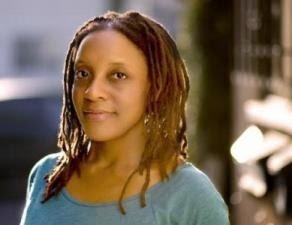 Yesterday, we had a review of Brandy Colbert's knockout debut Pointe. Today, we have a Twitterview with her, asking the tough questions about Pointe, her writing process, as well as the books and music that inspire her. This is our first Twitterview of the new year, and it's a good one.
Yesterday, we had a review of Brandy Colbert's knockout debut Pointe. Today, we have a Twitterview with her, asking the tough questions about Pointe, her writing process, as well as the books and music that inspire her. This is our first Twitterview of the new year, and it's a good one.In addition, we're giving away two finished copies of Pointe. Form is at the bottom of the interview, and the contest is open to US and Canadian residents only.
I'm so excited to share this conversation, so without further ado, here's Brandy.
Pitch Pointe in 140 characters.
A gifted dancer's life unravels when her childhood best friend returns after four years in captivity—and she has ties to the abduction.
What inspired Pointe?
A lifelong love of dance and an obsession with long-term kidnapping stories, especially the one portrayed in I Know My First Name Is Steven.
How would you describe Theo, your main character?
Determined. Foolhardy. Passionate. Competitive.
Theo is a POC in a very white world (in setting and sport). Talk about that.
Theo is very aware that she sticks out in her world, but she refuses to let her race define her, in both her life and desired profession.
Do you have more to say about that?
I do! POINTE is the third book I've written about a teenage black girl, but it's the first in which her race was not the focal point or even a subplot of the story. As someone who grew up black in a predominantly white town in southwest Missouri, I wanted to write a character who dealt with some of the day-to-day issues and obstacles I'd experienced without that being the point of the book. I was very involved in academics and extracurricular activities as a child and teen, and although it was a little tough almost always being the only black person in the room, or being the first black person to, for instance, join my high school's dance team, I think those years were instrumental in shaping the person I am today. Overall, I had a great time in high school and tried to make the best of it. If people were going to notice me for being different anyway, I wanted them to especially notice me for my accomplishments. I believe Theo has a similar attitude.
There's romance in this book but it's the friendships that stand out to me. Tell me about Theo and Ruthie's friendship.
They're lifelong friends from ballet and are competitive, but also have a mutual respect and trust that extends to life beyond the studio.
And how about Theo and Donovan's friendship?
Complicated. They're essentially strangers now, but also bonded for life, because and in spite of what happened when they were thirteen.
Was there a particular scene in the book you most enjoyed writing?
Theo + Hosea in the gazebo. They don't really know each other and are both very private, but they open up to talk honestly about their art.
What about a scene that gave you the most trouble writing?
Scenes at the abandoned park and convenience store. Dance scenes can be tough; you want to show authority + beauty without getting jargon-y.
Who is your ideal reader for Pointe?
Truly, everyone. But I love the idea of young black girls who haven't seen themselves represented this way in YA fiction connecting to it.
Is there anything you want readers to walk away with?
Hmm. I'd be happy knowing people think about the story at all after they finish the book.
Pointe is your debut novel. What's been the most exciting part of your debut year so far?
That people who aren't related to me care about this little idea that lived in my head and on my computer for years. It's so very surreal.
What's been the most surprising part of your debut year?
Emotions, everywhere! About everything! Also, time management is pretty much nonexistent these days.
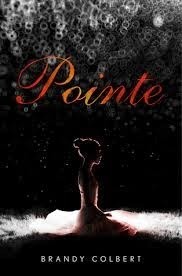 If you had to give your book a "____ meets _____" pitch, what two (or three! or four!) books/films/shows would Pointe be a meeting of?
If you had to give your book a "____ meets _____" pitch, what two (or three! or four!) books/films/shows would Pointe be a meeting of?
My editor has described it as "Black Swan" meets "Speak." I'm terrible at mash-ups and it's super flattering, so I'll go with that.
Outside of writing, what do you do with your free time?
I joke about being a hermit and it's maybe 40% true. I read a lot. Obsess over TV. Hang with friends who trick me into things like hiking.
Who or what do you write for?
Myself, mostly. Writing is very therapeutic for me, and my work is at its best when I write the type of story I would love to read.
What was your most influential read as a teenager?
How Do You Lose Those Ninth-Grade Blues? It was already dated when I first read it, but DeClements' books really speak to me.
Who are your top three writing influences?
ZZ Packer, Courtney Summers, Barthe DeClements
Who do you believe is breaking ground in YA right now?
Stephanie Kuehn, Corey Ann Haydu, Carrie Mesrobian, Blythe Woolston, Steve Brezenoff
Can you share three of your all-time, would-recommend-to-anyone favorite books?
The Particular Sadness of Lemon Cake by Aimee Bender, A Little Princess by Frances Hodgson Burnett, Hold Still by Nina LaCour
What's the best writing advice you ever received?
Be an honest writer. I found my voice once I stopped worrying what people would think of me for writing dark books about complicated topics.
What's your best writing advice to give?
If people say there's no room on the shelves for the books you write, keep at it until someone makes room for you. Don't give up.
What is your writing routine?
I am completely without routine, but I've always done my best writing late at night, and when I have large chunks of time to devote to it.
What gets you jazzed to write?
I'm inspired by good writing and storytelling, so: discovering new books/TV/film, my critique partners' work, rereading old favorites.
Do you have a writing soundtrack? Care to share a bit?
I love music, but don't write to it! In the rare instance I do, I tend to go with groups like Zero 7, Daft Punk, and Thievery Corporation.
What's next for you?
More gritty YA contemp about black girls. I'm working on two projects that I'm unbelievably excited about, but they're under wraps for now.
Favorite ice cream?
Only the tough questions! Tie between Ben & Jerry's AmeriCone Dream, Häagen-Dazs Dulche de Leche, and Trader Joe's Golden Caramel Swirl.
Would you like the chance to win Pointe? We're giving away two finished copies. Fill out the form below. We'll pull winners at the end of the month.
Loading...







 Related StoriesPointe by Brandy ColbertMarch Debut YA NovelsGet Genrefied: Realistic Teens on the Big Screen
Related StoriesPointe by Brandy ColbertMarch Debut YA NovelsGet Genrefied: Realistic Teens on the Big Screen
Published on April 02, 2014 22:00
April 1, 2014
Pointe by Brandy Colbert
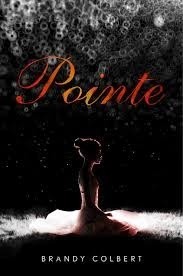 Theo, an elite ballerina, walks late into dance class only to see the usual accompanist has been replaced by Hosea -- the guy she kind of knows from school, who is dating a girl she kind of knows. But what she really knows is Hosea is one of the big suppliers of the pot she and her friends are able to score when they need it.
Theo, an elite ballerina, walks late into dance class only to see the usual accompanist has been replaced by Hosea -- the guy she kind of knows from school, who is dating a girl she kind of knows. But what she really knows is Hosea is one of the big suppliers of the pot she and her friends are able to score when they need it.As much Pointe by Brandy Colbert is a story about a relationship that develops between Theo and Hosea, it's also not a story about their relationship.
This is a story about what happens when Donovan, Theo's neighbor and best friend, suddenly comes back home four years after being kidnapped. When he won't talk to anyone.
When Donovan won't talk to anyone.
Because this book is complex and encompasses a lot of story within it -- and successfully so -- this review is full of spoilers. There's a lot I want to talk about, and avoiding the big issues in the sake of avoiding talking about a big plot issue won't work for me. Proceed at your own caution.
Colbert's debut novel tackles a huge array of topics within it, but it does so by carefully braiding together threads of Theo's past with the reality and immediacy of the present. There are balls in the air for her, including the return of Donovan, the future of gaining admission to another level of ballet that would set her on the track to big stages and a career in the art, and the budding romance with Hosea. Theo's juggling time with her close friends, as well: she's a girl who is social and who would never be seen as a wallflower nor the kind of person who would stay home at night, rather than go to the school dance or a party. Though it might be in her better interests not to.
In the midst of juggling the responsibilities of now, particularly the emerging romance between her and Hosea, flashbacks to life four years ago begin popping up. Slowly, Theo remembers the relationship she had with an older boy named Trent. He loved to have sex with her, and sometimes she liked it, while other times, she felt like she was being used. But Trent being eighteen and she being much younger, she went along with it. That relationship -- secret to her friends and her family -- made her feel good and wanted. It made her feel powerful. An older boy who physically showed her he was interested in her.
That relationship with Trent, though, wasn't entirely a secret to Donovan. Theo met Trent when she was hanging out with Donovan. He knew they had something going on, though the extent to which he knew remains in the air.
Backpedalling a bit, though: what about those four interim years between the time Donovan disappeared and when he returned? That's where things become really interesting, and the memories that bubble up from Theo serve as a means of giving us as readers a true sense of not just who she was, but who she's become now. We know she's a dancer. We know she has a future ahead of her. But we also know losing her best friend and losing the first boyfriend of her life and the stress of being a dancer couldn't be easy. Theo spent many of those interim years struggling with an eating disorder, one she held secret until she blacked out at the mall with one of her friends. The eating disorder was her means of holding control over something completely on her own. It ultimately got her institutionalized, and it's something from which she never quite recovered. Donovan's return home also retriggers the eating disorder. But not because of his presence; it's because of what his return brings up in Theo's past.
When Theo learns that the name of the man who kidnapped Donovan is Chris, things unhinge. When Theo puts the pieces together and realizes her Trent was never the person he said he was. He was never eighteen. He was in his twenties. And his name wasn't Trent.
It was Chris. The same Chris who pled not guilty to kidnapping Donovan and the same Chris against whom Theo will have to testify in order to seek justice for Donovan.
The same Chris who raped Theo. Who took advantage of her being underage and naive. The same Chris who raped Theo no one knows about until that very trial.
Colbert weaves in an array of "issues" within Pointe, and while it could have become easily overwhelming, Theo's amazing development as a character keeps them all together smoothly. Theo is a tough girl who doesn't take crap from anyone, but she's also a character who doesn't quite know how to trust that instinct about her. She's tentative internally as much as she appears steadfast and confident externally. Much of it is probably due to her being a ballerina and needing to exude that confidence on stage and shove down anything that might take away from the part she's playing while performing. But part of it comes from being a black girl in a mostly-white suburb outside Chicago, as well as being a black girl in a mostly-white artistic/athletic sphere.
Within the story, Theo's race plays a role in the experiences she has in and out of the classroom in ways that are painful to read but which also give immense insight into what that experience of being a minority might feel like. I can't ever know personally, but through Theo's actions and reactions, through the way she talks through these experiences internally, it was easy to understand where some of the external face she puts on comes from. She has to be strong, she has to be brave, and she has to stand up and fight harder than an average person would simply because of the color of her skin. It's unfair, and that unfairness shines through.
Though it looked and felt like a good thing in the moment, Theo's relationship with Hosea turns out to be a disaster. She and he are both aware that he's dating someone, but it doesn't stop either one of them from reciprocating the physical and emotional (at least her emotional) actions toward one another. Part of their relationship happens because Theo needs someone to be with her, now that the memories she'd tamped down are coming back up again with Donovan's return. She wants to feel that physical closeness. She wants to be wanted. But when Hosea and Theo are close to having sex in the science classroom and his girlfriend sees what happens, things end. Fortunately for Theo, the only thing Hosea ever got out of her was physical. He wasn't privy to her experiences with Chris nor how they related to Donovan.
In fact, the only person who ever knew what happened in Theo's past was a female friend of hers, and it came out almost by accident. That friend revealed something about her own life, and Theo reciprocated by talking about how she'd dated an older guy. And then revealed more and more, until the friend managed to convince Theo what had happened was rape. It was in this moment that Pointe went from being good to being really good -- not because Theo was forced to reconsider what happened, but because that reconsideration came through talking it out with another girlfriend. Not with Hosea. Not with a counselor. Not with anyone except a female friend. There is no one who saves Theo in the story except Theo herself. The boy who looked like he would be the hero falters, and it's she who gets to walk away, knowing that it was a mistake but a mistake from which she can learn.
But it got even better when, seated to testify at the trial, Theo reveals the rape to the courtroom. When she finally owns what happened to her those years ago. When she releases Donovan, too, because her testimony ultimately sends Chris to jail for kidnapping and a slew of other charges.
That reveal wasn't the only one she made. Theo also admits to her parents she isn't over her eating disorder. That she's not "okay." That she needs help. And with that, she chooses to check herself into the same clinic she attended before but didn't find helpful. This time, the story feels more promising, especially as she severs ties she really needs to and works to strengthen others. Going away means putting the ballet dreams on hold -- but she knows, too, they'll be there waiting for her when she's ready and healthy enough to visit them again.
Theo is one of my favorite characters in a long time. She makes a lot of dumb mistakes, and she's unwilling to trust herself, even when her gut instincts tell her what she's thinking or feeling are right. She's not weak, but she's also not "strong." She's imperfect and rough and misguided but ultimately, she wants to do what's right. It's just a matter of figuring out how to do that without continuing to hurt herself in the process -- which she does anyway, but in recognizing that, she grows. Theo learns about trusting herself, as well as trusting others in the process.
At the end of Pointe, nothing is perfect. Theo will still make dumb mistakes. That she'll still stumble and fall. She'll still likely go out and party when it might be smarter not to. But we also know she's figured out that she has the capability to own her story and work with it, rather than always work against it. To recognize that being a human being means being imperfect, and that the best relationships are the ones that take work. Especially the relationship one has with herself.
Pass Brandy Colbert's Pointe to readers who love Sara Zarr or Siobhan Vivian. Those readers who love a complex female character and a book that's tightly written with an authentic and memorable voice will find much to love here. Readers who want a story that features a character passionate about her art -- dancers especially -- will enjoy Theo's dedication and Colbert's ability to write about it with authority. Although there is a lot of plot, ultimately Pointe is a character-driven novel, and one that will resonate with readers who are eager for solid, memorable, smart, damn good contemporary YA fiction. Colbert creates real teen characters in situations that allow them to be teenagers without offering judgment for the choices that they do and do not make, regardless of how smart those choices may or may not be.
Pointe will be available April 10. Review copy received from the publisher. Tomorrow, we'll have an interview with Colbert, along with a giveaway.







 Related StoriesGirls Across Borders: Reviews from the Outstanding Books for the College Bound ListMarch Debut YA NovelsGet Genrefied: Realistic Teens on the Big Screen
Related StoriesGirls Across Borders: Reviews from the Outstanding Books for the College Bound ListMarch Debut YA NovelsGet Genrefied: Realistic Teens on the Big Screen
Published on April 01, 2014 22:00
March 31, 2014
Get Genrefied: Realistic Teens on the Big Screen
Last week, Vanity Fair published a piece that got many people riled up. No, the problem isn't the excitement building over John Green's The Fault in Our Stars getting closer to being on the silver screen. It's not that his book Paper Towns is in the works, with Green being executive producer. It's that the piece suggests Green is leading a teen-movie renaissance, wherein Green's film for teens is the only one that "lacks a supernatural or post-apocalyptic bent" in recent times. It goes on to say that his books on screen will lead a revolution in filmmaking, reviving realistic teens on screen.
The problem is there have been plenty of realistic teen stories put on film in recent years. While Green's will undoubtedly be popular, he's not alone here, nor should he be credited for a revolution. Vanity Fair offered up a second piece about 10 movies that could fuel a realistic teens on screen comeback, but it, too, discredits the wealth of realistic teen flicks that have been made -- or are coming out soon.
We thought for this month's installment of Get Genrefied, we'd talk about the realistic teens who have had their stories move from print to the big screen. This isn't a revolution of any sort; it's a spike in popularity due to a well-known and recognizable name (to teens and adults) at the helm.
Options
If you read about book news on the internet at all, chances are you've read about books being "optioned." It happens a lot, much more frequently than movies actually being made from books. I (Kimberly) have learned over the years not to get too excited about a favorite book being optioned, since it doesn't guarantee a film. An option is basically someone renting the exclusive right to make a film (or tv movie or tv series) for a certain period of time. After that period of time expires, the option becomes available for someone else. While that first someone holds the option, no one else can try to make a film out of the book.
All sorts of things can happen (or not happen, as is more often the case) during this option period. If your favorite book was optioned but you never end up seeing it at your theater, it's possible that the filmmakers couldn't secure funding, the script wasn't up to snuff, they couldn't get the actors they wanted, or they just didn't actually like it all that much after all, but wanted to keep it available in case they changed their minds. I'm no insider; this is information I've gleaned from reading a lot on the web and asking a lot of questions of people who do know things. Writers Digest has a very clear and more detailed explanation of what an option entails and the next steps that bring a book to the screen.
We're addressing this in our genre guide because news of YA books being optioned can sometimes skew perceptions and make it seem like we're awash in YA adaptations and Hunger Games ripoffs. Often the information that a book has been optioned is used as a marketing tool for the book. Take the information for what it is. Just because the book has been optioned doesn't mean you'll ever see it. It's the first step, but it's far from a green light.
What Would You Like to See?
It's fun to dream about seeing our favorite books on the big (or even the small) screen. We've rounded up a few lists of YA books that readers would love to see made into films. A lot of the titles mentioned actually have been optioned - but as mentioned above, that's no guarantee. It's a little hope for the dreamers, at least. Which books do you wish would be adapted?
Molly Wetta at Wrapped up in Books writes about YA Movie Adaptations in a Perfect World, including Graffiti Moon by Cath Crowley and Imaginary Girls by Nova Ren Suma. This isn't a wish list, but it does a good job of collecting some of the books that have been optioned and are in various stages of production. Again, no guarantees you'll see them all on the screen: What's Next: Over 60 Upcoming Young Adult Book-to-Movie Adaptations.Margot at Epic Reads rounds up some YA books that she thinks would make great horror movies: 12 Creepy YA Books That Should Be Made Into Horror MoviesSarah Pitre has a top ten list at Litreactor that includes Beauty Queens and Megan McCafferty's Jessica Darling series: Top 10 YA Books That Should Be Adapted for Film
Realistic Teen Novels Made Into Movies
Here's a roundup of the realistic (mostly -- we could debate titles like The Princess Diaries but we're including it) YA novels that have been made into movies. These are older and newer titles, all of which you can seek out and watch. Books like Caroline B. Cooney's The Face on the Milk Carton have been left off because, while it was made into a movie, it was made for TV and isn't as easy to track down and enjoy. We've included the movie images, linked to IMDB descriptions, and we included the source titles for the movie, since it's not always obvious. After this list, we'll dive into move movies that feature realistic teen characters and stories but which had source materials from adult books.
Worth noting: not all of the movies based on YA books are made for the teen audience. Some skew a bit younger and others skew a bit older. It's worth checking ratings in the event you want to show one or these in a classroom or library -- Fat Kid Rules the World, for example, is rated R, despite the fact the book is a YA novel. Same with The Spectacular Now.
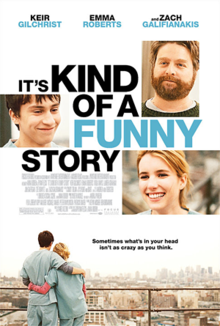
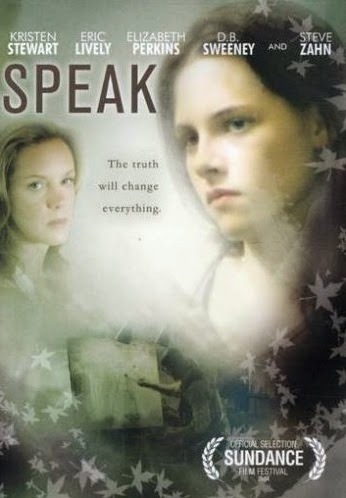

It's Kind of a Funny Story based on Ned Vizzini's book of the same title.
Speak based on Laurie Halse Anderson's book of the same title.
The Outsiders based on S. E. Hinton's book of the same title.
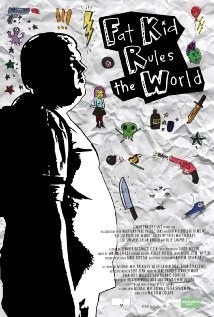
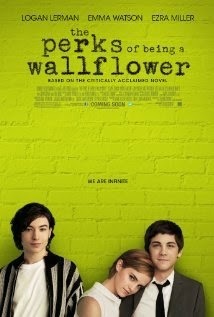
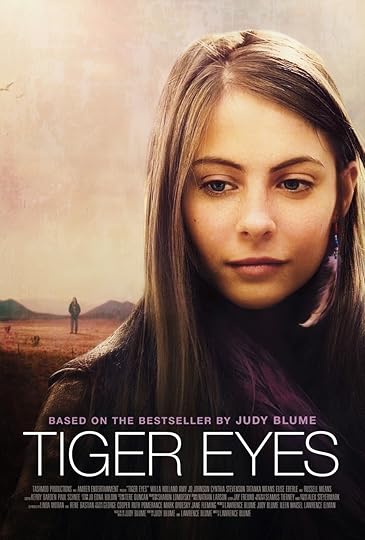
Fat Kid Rules the World based on K. L. Going's book of the same title.
The Perks of Being A Wallflower based on Stephen Chbosky's book of the same title.
Tiger Eyes based on Judy Blume's book of the same title.



How to Deal based on two books by Sarah Dessen, That Summer and Someone Like You.
Nick & Norah's Infinite Playlist based on the book by Rachel Cohn and David Levithan of the same title.
Sisterhood of the Traveling Pants based on Ann Brashares' novel of the same title.


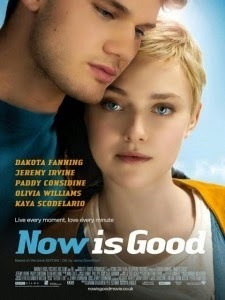
Flipped based on Wendelin Van Draanen's novel of the same name.
Geography Club based on Brent Hartinger's novel of the same name.
Now is Good based on Jenny Downham's novel Before I Die.
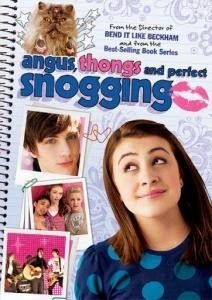
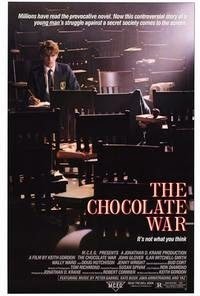
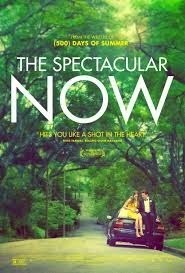
Angus, Thongs, and Perfect Snogging based on Louise Rennison's Angus, Thongs, and Full Frontal Snogging.
The Chocolate War based on Robert Cormier's novel of the same title.
The Spectacular Now based on Tim Tharp's novel of the same title.
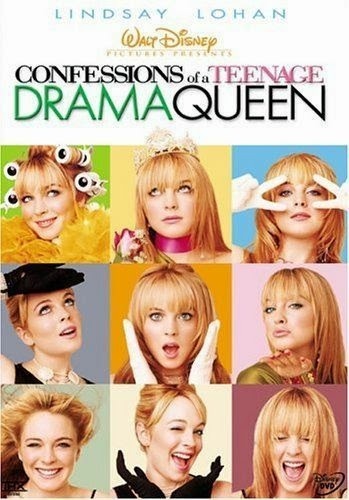


Confessions of a Teenage Drama Queen based on Dyan Sheldon's book of the same title.
That Was Then, This is Now based on S. E. Hinton's novel of the same title.
Whip It based on Shauna Cross's novel Derby Girl.
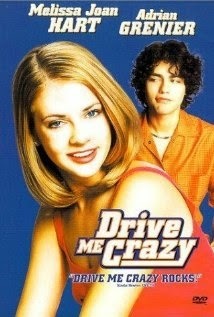


Drive Me Crazy based on the Todd Strasser book Girl Gives Birth to Own Prom Date.
Lemonade Mouth based on Mark Peter Hughes's novel of the same name. Technically, this is a made-for-TV movie, but it should be easy enough to track down and watch, as it came out in 2011.
Paranoid Park based on the Blake Nelson book with the same title.

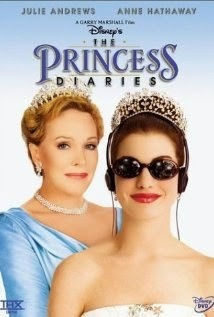

Hoot based on the novel by Carl Hiaasen with the same title. This likely skews more middle grade, but we're including it anyway.
The Princess Diaries based on Meg Cabot's book with the same title.
Rumble Fish based on S. E. Hinton's book with the same title.
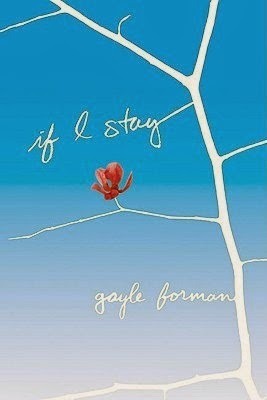

If I Stay based on the novel by Gayle Forman will be in theaters August 22, 2014.
The Fault in Our Stars based on the novel by John Green will be in theaters June 6, 2014.
Realistic Teen-Driven Films Based on Books That Aren't YA
Here's a roundup of teen-driven, realistic movies that are based on books that weren't published YA. These are adult fiction and nonfiction titles, as well as graphic novels, but they have good appeal to teen viewers (if that's not the movie's primary target audience). Note the ratings and note, too, not all of these are right for all teen viewers. But we included some titles, like The Virgin Suicides, because we know it can be a teen cult favorite.
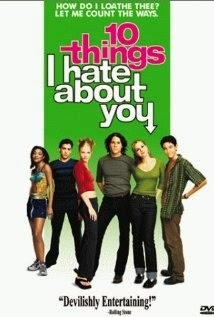
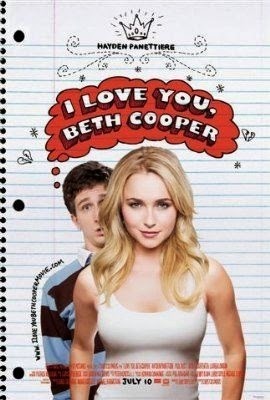
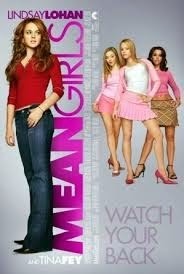
Ten Things I Hate About You is loosely based on Shakespeare's The Taming of the Shew.
I Love You, Beth Cooper is based on Larry Doyle's novel of the same title. We couldn't decide if this was a YA book or an adult book, since it seems to be all over the place, so we're putting it here.
Mean Girls is loosely based on Rosalind Wiseman's non-fictional work Queen Bees and Wannabes.
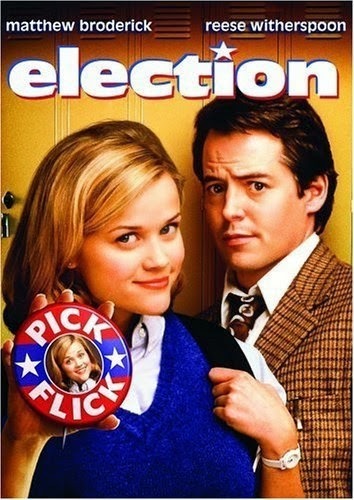
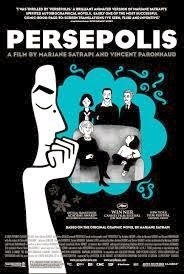
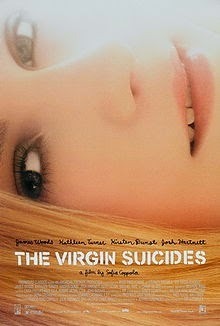
Election is based on Tom Perrotta's novel of the same name.
Persepolis is based on Marjane Satrapi's graphic novel of the same name.
The Virgin Suicides is based on Jeffrey Eugenides novel of the same name.


Girl, Interrupted based on Susanna Kaysen's book with the same title.
"O" based loosely on Shakespeare's Othello.







 Related StoriesHardcover to Paperback: YA Redesigns to ConsiderGirls Across Borders: Reviews from the Outstanding Books for the College Bound ListMarch Debut YA Novels
Related StoriesHardcover to Paperback: YA Redesigns to ConsiderGirls Across Borders: Reviews from the Outstanding Books for the College Bound ListMarch Debut YA Novels
The problem is there have been plenty of realistic teen stories put on film in recent years. While Green's will undoubtedly be popular, he's not alone here, nor should he be credited for a revolution. Vanity Fair offered up a second piece about 10 movies that could fuel a realistic teens on screen comeback, but it, too, discredits the wealth of realistic teen flicks that have been made -- or are coming out soon.
We thought for this month's installment of Get Genrefied, we'd talk about the realistic teens who have had their stories move from print to the big screen. This isn't a revolution of any sort; it's a spike in popularity due to a well-known and recognizable name (to teens and adults) at the helm.
Options
If you read about book news on the internet at all, chances are you've read about books being "optioned." It happens a lot, much more frequently than movies actually being made from books. I (Kimberly) have learned over the years not to get too excited about a favorite book being optioned, since it doesn't guarantee a film. An option is basically someone renting the exclusive right to make a film (or tv movie or tv series) for a certain period of time. After that period of time expires, the option becomes available for someone else. While that first someone holds the option, no one else can try to make a film out of the book.
All sorts of things can happen (or not happen, as is more often the case) during this option period. If your favorite book was optioned but you never end up seeing it at your theater, it's possible that the filmmakers couldn't secure funding, the script wasn't up to snuff, they couldn't get the actors they wanted, or they just didn't actually like it all that much after all, but wanted to keep it available in case they changed their minds. I'm no insider; this is information I've gleaned from reading a lot on the web and asking a lot of questions of people who do know things. Writers Digest has a very clear and more detailed explanation of what an option entails and the next steps that bring a book to the screen.
We're addressing this in our genre guide because news of YA books being optioned can sometimes skew perceptions and make it seem like we're awash in YA adaptations and Hunger Games ripoffs. Often the information that a book has been optioned is used as a marketing tool for the book. Take the information for what it is. Just because the book has been optioned doesn't mean you'll ever see it. It's the first step, but it's far from a green light.
What Would You Like to See?
It's fun to dream about seeing our favorite books on the big (or even the small) screen. We've rounded up a few lists of YA books that readers would love to see made into films. A lot of the titles mentioned actually have been optioned - but as mentioned above, that's no guarantee. It's a little hope for the dreamers, at least. Which books do you wish would be adapted?
Molly Wetta at Wrapped up in Books writes about YA Movie Adaptations in a Perfect World, including Graffiti Moon by Cath Crowley and Imaginary Girls by Nova Ren Suma. This isn't a wish list, but it does a good job of collecting some of the books that have been optioned and are in various stages of production. Again, no guarantees you'll see them all on the screen: What's Next: Over 60 Upcoming Young Adult Book-to-Movie Adaptations.Margot at Epic Reads rounds up some YA books that she thinks would make great horror movies: 12 Creepy YA Books That Should Be Made Into Horror MoviesSarah Pitre has a top ten list at Litreactor that includes Beauty Queens and Megan McCafferty's Jessica Darling series: Top 10 YA Books That Should Be Adapted for Film
Realistic Teen Novels Made Into Movies
Here's a roundup of the realistic (mostly -- we could debate titles like The Princess Diaries but we're including it) YA novels that have been made into movies. These are older and newer titles, all of which you can seek out and watch. Books like Caroline B. Cooney's The Face on the Milk Carton have been left off because, while it was made into a movie, it was made for TV and isn't as easy to track down and enjoy. We've included the movie images, linked to IMDB descriptions, and we included the source titles for the movie, since it's not always obvious. After this list, we'll dive into move movies that feature realistic teen characters and stories but which had source materials from adult books.
Worth noting: not all of the movies based on YA books are made for the teen audience. Some skew a bit younger and others skew a bit older. It's worth checking ratings in the event you want to show one or these in a classroom or library -- Fat Kid Rules the World, for example, is rated R, despite the fact the book is a YA novel. Same with The Spectacular Now.



It's Kind of a Funny Story based on Ned Vizzini's book of the same title.
Speak based on Laurie Halse Anderson's book of the same title.
The Outsiders based on S. E. Hinton's book of the same title.



Fat Kid Rules the World based on K. L. Going's book of the same title.
The Perks of Being A Wallflower based on Stephen Chbosky's book of the same title.
Tiger Eyes based on Judy Blume's book of the same title.



How to Deal based on two books by Sarah Dessen, That Summer and Someone Like You.
Nick & Norah's Infinite Playlist based on the book by Rachel Cohn and David Levithan of the same title.
Sisterhood of the Traveling Pants based on Ann Brashares' novel of the same title.



Flipped based on Wendelin Van Draanen's novel of the same name.
Geography Club based on Brent Hartinger's novel of the same name.
Now is Good based on Jenny Downham's novel Before I Die.



Angus, Thongs, and Perfect Snogging based on Louise Rennison's Angus, Thongs, and Full Frontal Snogging.
The Chocolate War based on Robert Cormier's novel of the same title.
The Spectacular Now based on Tim Tharp's novel of the same title.



Confessions of a Teenage Drama Queen based on Dyan Sheldon's book of the same title.
That Was Then, This is Now based on S. E. Hinton's novel of the same title.
Whip It based on Shauna Cross's novel Derby Girl.



Drive Me Crazy based on the Todd Strasser book Girl Gives Birth to Own Prom Date.
Lemonade Mouth based on Mark Peter Hughes's novel of the same name. Technically, this is a made-for-TV movie, but it should be easy enough to track down and watch, as it came out in 2011.
Paranoid Park based on the Blake Nelson book with the same title.



Hoot based on the novel by Carl Hiaasen with the same title. This likely skews more middle grade, but we're including it anyway.
The Princess Diaries based on Meg Cabot's book with the same title.
Rumble Fish based on S. E. Hinton's book with the same title.


If I Stay based on the novel by Gayle Forman will be in theaters August 22, 2014.
The Fault in Our Stars based on the novel by John Green will be in theaters June 6, 2014.
Realistic Teen-Driven Films Based on Books That Aren't YA
Here's a roundup of teen-driven, realistic movies that are based on books that weren't published YA. These are adult fiction and nonfiction titles, as well as graphic novels, but they have good appeal to teen viewers (if that's not the movie's primary target audience). Note the ratings and note, too, not all of these are right for all teen viewers. But we included some titles, like The Virgin Suicides, because we know it can be a teen cult favorite.



Ten Things I Hate About You is loosely based on Shakespeare's The Taming of the Shew.
I Love You, Beth Cooper is based on Larry Doyle's novel of the same title. We couldn't decide if this was a YA book or an adult book, since it seems to be all over the place, so we're putting it here.
Mean Girls is loosely based on Rosalind Wiseman's non-fictional work Queen Bees and Wannabes.



Election is based on Tom Perrotta's novel of the same name.
Persepolis is based on Marjane Satrapi's graphic novel of the same name.
The Virgin Suicides is based on Jeffrey Eugenides novel of the same name.


Girl, Interrupted based on Susanna Kaysen's book with the same title.
"O" based loosely on Shakespeare's Othello.







 Related StoriesHardcover to Paperback: YA Redesigns to ConsiderGirls Across Borders: Reviews from the Outstanding Books for the College Bound ListMarch Debut YA Novels
Related StoriesHardcover to Paperback: YA Redesigns to ConsiderGirls Across Borders: Reviews from the Outstanding Books for the College Bound ListMarch Debut YA Novels
Published on March 31, 2014 22:00
March 30, 2014
Hardcover to Paperback: YA Redesigns to Consider
In this installment of YA books getting new looks in paperback, I've included not only standalone titles getting new looks, but I've included a series getting a new look, too. As usual, some of these redesigns are great and some of them I am not entirely sure I understand nor think have improved upon original ideas. Likewise, some of the cover redesigns have been clearly inspired by new trends, and whether that's a positive or a negative for that particular book is up for debate.
All original covers are on the left, with their new looks on the right.


Beta by Rachel Cohn came out back in October 2012 and honestly, I kind of forgot about this book and the fact it's the first in a series. I think some of it has to do with the fact the hardcover isn't memorable. In fact, I think this cover looks like many other covers that came out at the same time -- it's a single girl's face and that face isn't necessarily memorable. Sure, she's got a floral design on her skin, but that's not enough to make this cover stand out from the crowd. When a book has a cover like this one, while it might be on trend, it's also remarkably boring and forgettable. What is this book about vs what other books featuring a big face are about? I'm not sure. I have no idea what genre this book is, and even the blurb on the cover from Melissa de la Cruz doesn't offer a whole lot. It's a riveting novel about what? What the cover does have going for it is the title and font, which suggest this is perhaps science fiction of some flavor.
The paperback redesign of Beta came out last summer; like I said, this is a book I kind of forgot about because while it may have made a splash initially, it didn't get on my radar nor have I read a lot about it. The redesign is much better than the hardcover, though I don't know if I love it, either. Rather than make use of de la Cruz's blurb, the redesign uses a tag line that . . . also doesn't tell you a whole lot about the book, other than there will be romance (which can be the hook for a lot of readers, regardless of genre). I do like the color scheme going on, and I like the feel of the cover, since it's clearly set in a warm, tropical, and likely exotic place. I like that the original font from the title carried over, as I do think between that and the image itself, there's a little bit better genre placement. It's still not perfectly clear, but it's better.
But can someone explain to me what's going on with that model's foot? Why does it look bent in the wrong direction? She looks exceptionally uncomfortable like that.
For me, the paperback edition of Beta wins for better cover, and I think it's fitting with the second book in the series, Emergent. When you look at that cover, the cover for Beta makes a little more sense, as the people look more robotic than they do human.
Speaking of Rachel Cohn, three books she co-authored with David Levithan are getting recovered for the fall.
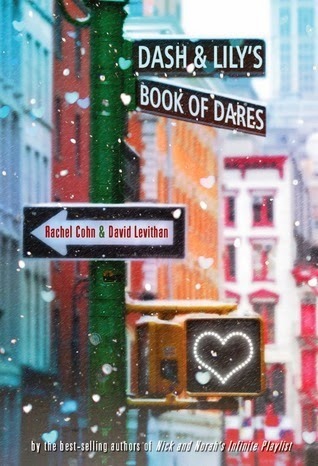
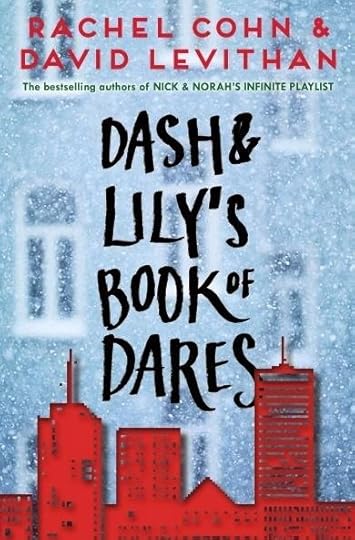
Dash & Lily's Book of Dares

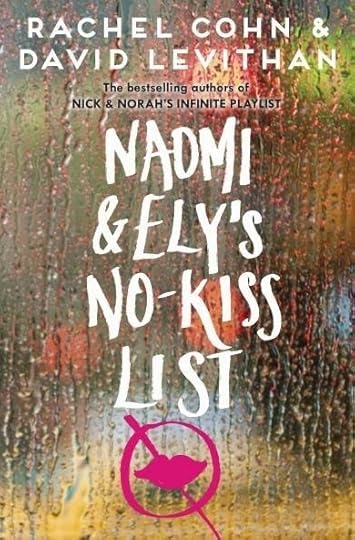
Naomi & Ely's No-Kiss List

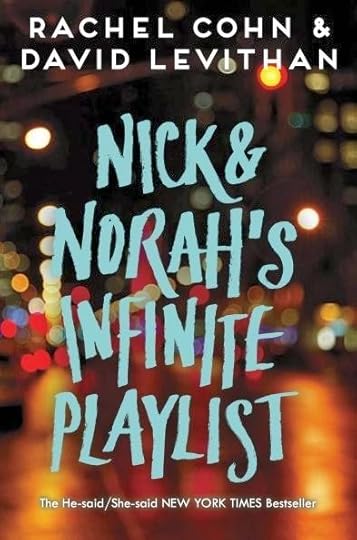
Nick & Norah's Infinite Playlist
There's nothing particularly remarkable about any of these cover makeovers. They're all pretty nice, though I'm not sure how much up to date they are compared to the original looks. One of the reasons it was noted that these books were getting redesigned was to play off the popularity of contemporary YA in the vein of John Green and Rainbow Rowell (of course). I don't know so much that I see the influence of either of those authors' books on these covers, especially since the original covers were themselves pretty iconic -- maybe if I see it at all, I see a little of Will Grayson in the Nick and Norah cover. What I do like on all of the redesigns, though, is that the font is the driving force for the cover, and I think that good fonts are at play here. I also do like that both authors -- who are each known for being pretty prolific -- have had the size of the font for their names made bigger.
Interesting tag line of sorts, though, on Nick & Norah that I'm not sure I entirely understand: "The He-said/She-told New York Times Bestseller." What's the difference between he-said and she-told? I have read the book and saw the movie but I'm not sure I get that.
All of these Rachel Cohn and David Levithan paperback redesigns will be available September 23, 2014.
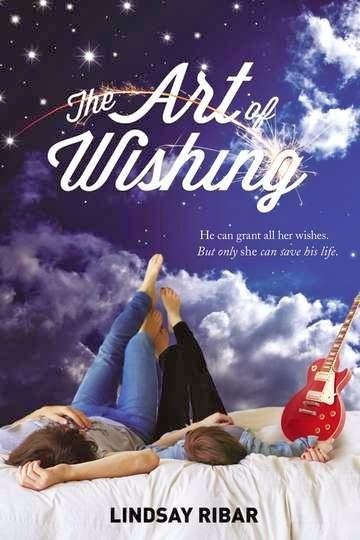
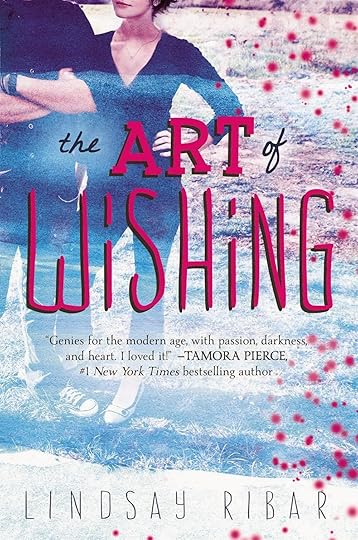
The Art of Wishing by Lindsay Ribar is getting a redesign that I don't think is better nor worse than the original. I think that they're maybe missing the right audience for this book all together, as the hardcover reads really young and the paperback reads much more adult. Neither sort of hit that middle ground of young adult. I kind of like both covers, but I like them in context of one for younger readers and one for adult readers.
The original hardcover on the left has a tag line to it that, when you read it and look at the cover, doesn't add or mean much: "He can grant all her wishes. But only she can save his life." It looks to me like those are two girls laying on that bed, but I suppose it could be a guy on the lefthand side there laying beside a girl. If that's the case, maybe the tagline makes a little more sense. I do love the font and placement for the title quite a bit.
On the paperback, the tag line is gone, but now there is a prominent blurb beneath the title. What stands out is how big and loud Tamora Pierce's name is on the cover -- it's more obvious to me than the author's name, which sort of fades into the background because the font is so thin and it's hidden on the bottom (at least with the hardcover, her name is dark and easily pops out). The font choice for the title here confuses me a bit because there's almost too much going on. For four words, there are three different fonts, including one that uses a mixture of capital and lowercase letters. As for the image, it's clearer now that it's a male and a female on the cover than it may be on the hardcover (I still think it's two girls) but their stance is much more defensive than it is inviting to readers. Are they angry? I can't say I am a huge fan of the red dots along the right-hand side, nor am I particularly keen on the faded effect. Is that snow on the ground or just how the image looks? I'm not entirely sure.
I don't think either cover is great, and I don't think either is terrible. Both are sort of middle ground. The paperback for The Art of Wishing will be available June 12, 2014, and the second book in the series, The Fourth Wish, will retain the style of the redesign (and, I think, looks much better than the paperback redesign).
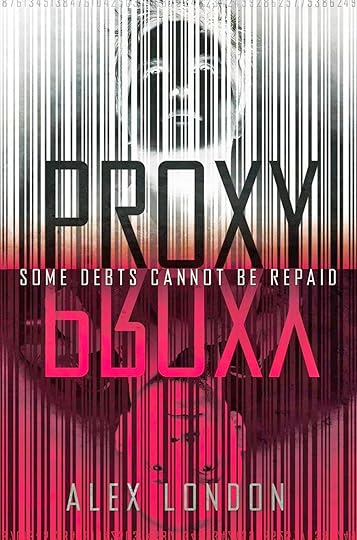

Like with The Art of Wishing, I have a lot of neutral mixed feelings about both the hardcover and the paperback redesign of Alex London's Proxy. On one hand, the hardcover is pretty distinctive, even if it's not the most visually appealing. It's distinctive because it's jarring and because it forces you to pause and try to make sense of it. It makes use of a mirrored effect, but it's not a perfect mirror image. The font is, but if you look at the two faces on the cover, they're much different -- and that is, in many ways, really eerie to see. I'm not a huge fan of the bars running on either side of the split, but again, I think that's what makes this cover pretty distinctive and memorable. I can see a teen asking for this book by asking for the book with elements of this cover (i.e., it's red and white, kind of like it's a reflected image and there are a lot of black lines). I dig how the tag line, "Some debts cannot be repaid," is right in the middle of the cover, splitting it in two. I also think it's just a nice tag line, even if it's not particularly memorable nor telling of the story inside. It's catchy.
The paperback, on the other hand, looks like a dystopian novel and that is one of the big things that works both in its favor and against it. This book looks like a lot of other books out there, and for teens who love that genre, this will be what they're looking for. The redesign also features a blurb quite prominently, and that blurb from Marie Lu is pretty smart -- readers who like Lu's books will likely want to try London's series. I think it was smart to carry over the same color palette to the new design, though the use of a cityscape for the driving image here isn't particularly memorable (a teen comes to the reference desk asking for the book with a city on the cover is going to yield too many results). I find the placement of the tag line and how it's in two different sized fonts to be a little unsettling and I think it overwhelms the cover. For some reason, the period there bothers me a lot. It's not there in the hardcover, and it looks out of place. Why is "some debts" so much bigger than "cannot be repaid?" I'll also say that the font for the title isn't my favorite. The lack of a center for the P, the R, and O makes it feel uneven.
Again, neither cover is terrible but neither knocks it out of the park. Proxy will be available in paperback on May 1, 2014. The second book in London's series, Guardian, will follow in line with the design in the paperback makeover.
Here is a series for younger teen readers that's getting an entire facelift:
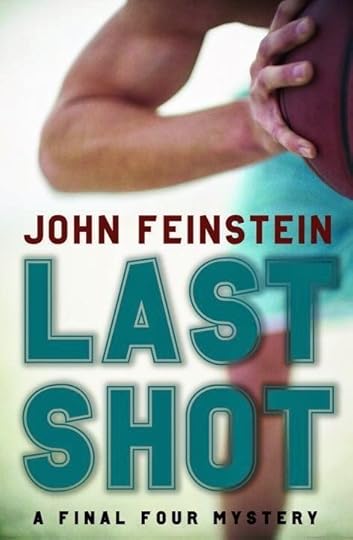
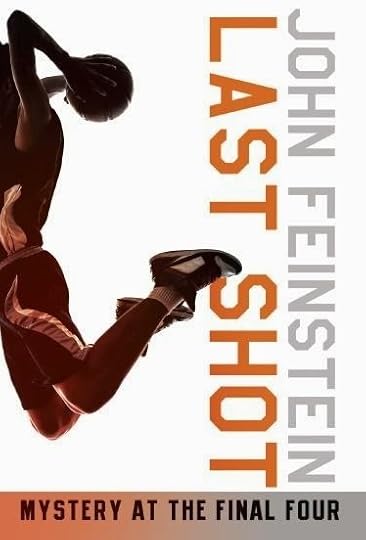
Last Shot

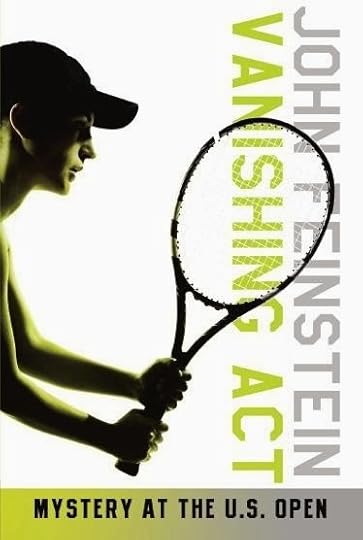
Vanishing Act
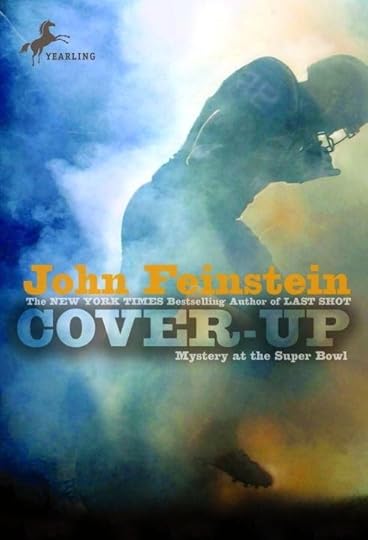
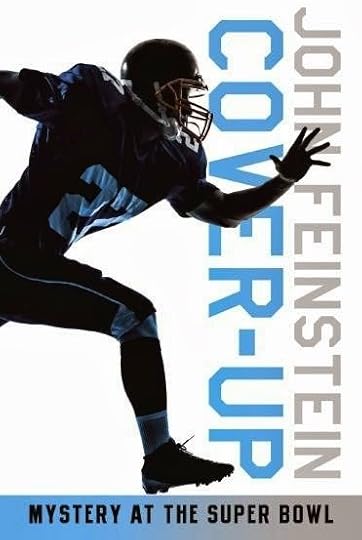
The Cover-Up
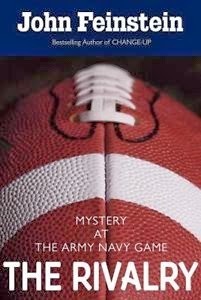

The Rivalry
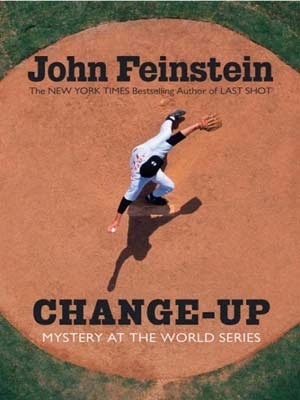

Change-Up
If ever a series needed a redesign -- one that would bring unity and cohesion to the series itself -- it's John Feinstein's sports mystery series. I'll be honest and say that I'm not even sure I've collected the original cover images on the left. I know I have in some cases, but I feel like I've seen other covers for these books, too. For readers who might not be familiar with this series, it's a really good choice for those who like sports books or mysteries, and it's a good choice for readers (or parents) who are concerned about content. It's not written down and because it's a series, it's a way to get readers who might be a little more reluctant to get hooked and keep reading. The catalog calls this a series for readers 10 and older, but in every library I've worked in, it's been shelved in YA. It's fine for younger readers, but I think the prime audience is that 12-16 or so range.
I'm a huge fan of the redesign, as I think it nicely unifies all of the books in the series while also making it clear they're about different sports. While we get that from the other designs, what we don't know from the other covers is that these books all go together and that they're a series. There's not anything unifying them in their looks. The new covers are very clean and crisp, with just a minimal amount of coloring. What's interesting, too, and what I think is maybe smart is that because the players on the new covers aren't easily identifiable, they look ageless, if not older than teens themselves. That can be a big factor of appeal for a lot of readers, who may feel like they're reading much older books.
This series redesign/rebranding is a big win in my book. John Feinstein's books will be available in their new looks on August 5, 2014. If you've had this series languishing on your shelves, I would consider springing for the series again with their new look. I bet it'll spark new interest -- plus, it just looks really good.
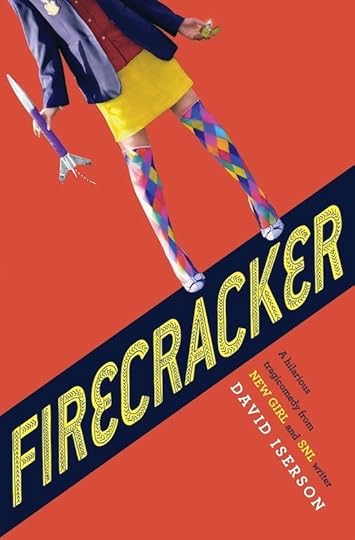
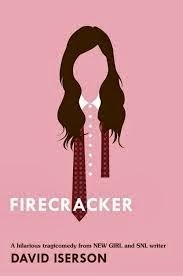
Let's round out this post on a cover redesign I'm not entirely sold on because I'm not sure it nails it in the way that the hardcover does. David Iserson's Firecracker came out last year, and it's one of those books I keep meaning to read but haven't picked up yet. It's supposed to be a funny story about a girl who is told by her parents she's being moved from her boarding school to public school. The reviews I've read have suggested it's quirky without being "quirky," and it's a fun read. The hardcover nails that feel. I love the fact we don't see a whole girl, but I do love the fact we see a girl on the cover, and she's
wearing a bright, fun, and yet really wild collection of clothes. The rocket in her hand is representative of a big element in the story, which is that the main character lives in a rocket ship in her parents backyard. The way the title is angled across the lower half of the cover, along with the somewhat billboard-esque font choice is fun and eye-catching, and Iserson's name also stands out because it's angled and done in a contrasting font. Everything This is a bright, fun cover that is super eye catching because it's so different and yet, it's really not that different at all. The slighter things -- her clothes, the rocket ship, the font and layout -- are what make it stand out.
The paperback for Firecracker is boring. It lacks the life and verve that the hardcover has, and I think it's because it's sort of a lifeless pink, with a lifeless -- and faceless -- girl in the middle. It feels like they were going for a design that mirrored the hot and trendy illustration wave, but in doing so, they removed the fun from the cover. Even the title placement and the font used is dull. If anything, this book will have a much better appeal to adult readers than to teens, which might be the point since, like with the paperback, it's noted that Iserson's a writer for New Girl and SNL (both are shows I think that appeal to the 20-something audience more than the teen audience). This cover makes me miss the spunky girl on the original quite a bit, since this girl...she's got a loose tie and no face and thus, no expression whatsoever.
Hardcover wins this round without question, and in fact, every time I see that hardcover I'm reminded how much I want to pick up and read this book. Firecracker will be available in paperback June 12, 2014.
What do you think? Which cover redesigns here are winners and which ones aren't going to be making the most memorable list?






 Related StoriesHardcover to Paperback: Six YA Redesigns to ConsiderEye-Focused Covers in 2014YA Reissue Cover Makeovers -- Updating for New Readerships
Related StoriesHardcover to Paperback: Six YA Redesigns to ConsiderEye-Focused Covers in 2014YA Reissue Cover Makeovers -- Updating for New Readerships
All original covers are on the left, with their new looks on the right.


Beta by Rachel Cohn came out back in October 2012 and honestly, I kind of forgot about this book and the fact it's the first in a series. I think some of it has to do with the fact the hardcover isn't memorable. In fact, I think this cover looks like many other covers that came out at the same time -- it's a single girl's face and that face isn't necessarily memorable. Sure, she's got a floral design on her skin, but that's not enough to make this cover stand out from the crowd. When a book has a cover like this one, while it might be on trend, it's also remarkably boring and forgettable. What is this book about vs what other books featuring a big face are about? I'm not sure. I have no idea what genre this book is, and even the blurb on the cover from Melissa de la Cruz doesn't offer a whole lot. It's a riveting novel about what? What the cover does have going for it is the title and font, which suggest this is perhaps science fiction of some flavor.
The paperback redesign of Beta came out last summer; like I said, this is a book I kind of forgot about because while it may have made a splash initially, it didn't get on my radar nor have I read a lot about it. The redesign is much better than the hardcover, though I don't know if I love it, either. Rather than make use of de la Cruz's blurb, the redesign uses a tag line that . . . also doesn't tell you a whole lot about the book, other than there will be romance (which can be the hook for a lot of readers, regardless of genre). I do like the color scheme going on, and I like the feel of the cover, since it's clearly set in a warm, tropical, and likely exotic place. I like that the original font from the title carried over, as I do think between that and the image itself, there's a little bit better genre placement. It's still not perfectly clear, but it's better.
But can someone explain to me what's going on with that model's foot? Why does it look bent in the wrong direction? She looks exceptionally uncomfortable like that.
For me, the paperback edition of Beta wins for better cover, and I think it's fitting with the second book in the series, Emergent. When you look at that cover, the cover for Beta makes a little more sense, as the people look more robotic than they do human.
Speaking of Rachel Cohn, three books she co-authored with David Levithan are getting recovered for the fall.


Dash & Lily's Book of Dares


Naomi & Ely's No-Kiss List


Nick & Norah's Infinite Playlist
There's nothing particularly remarkable about any of these cover makeovers. They're all pretty nice, though I'm not sure how much up to date they are compared to the original looks. One of the reasons it was noted that these books were getting redesigned was to play off the popularity of contemporary YA in the vein of John Green and Rainbow Rowell (of course). I don't know so much that I see the influence of either of those authors' books on these covers, especially since the original covers were themselves pretty iconic -- maybe if I see it at all, I see a little of Will Grayson in the Nick and Norah cover. What I do like on all of the redesigns, though, is that the font is the driving force for the cover, and I think that good fonts are at play here. I also do like that both authors -- who are each known for being pretty prolific -- have had the size of the font for their names made bigger.
Interesting tag line of sorts, though, on Nick & Norah that I'm not sure I entirely understand: "The He-said/She-told New York Times Bestseller." What's the difference between he-said and she-told? I have read the book and saw the movie but I'm not sure I get that.
All of these Rachel Cohn and David Levithan paperback redesigns will be available September 23, 2014.


The Art of Wishing by Lindsay Ribar is getting a redesign that I don't think is better nor worse than the original. I think that they're maybe missing the right audience for this book all together, as the hardcover reads really young and the paperback reads much more adult. Neither sort of hit that middle ground of young adult. I kind of like both covers, but I like them in context of one for younger readers and one for adult readers.
The original hardcover on the left has a tag line to it that, when you read it and look at the cover, doesn't add or mean much: "He can grant all her wishes. But only she can save his life." It looks to me like those are two girls laying on that bed, but I suppose it could be a guy on the lefthand side there laying beside a girl. If that's the case, maybe the tagline makes a little more sense. I do love the font and placement for the title quite a bit.
On the paperback, the tag line is gone, but now there is a prominent blurb beneath the title. What stands out is how big and loud Tamora Pierce's name is on the cover -- it's more obvious to me than the author's name, which sort of fades into the background because the font is so thin and it's hidden on the bottom (at least with the hardcover, her name is dark and easily pops out). The font choice for the title here confuses me a bit because there's almost too much going on. For four words, there are three different fonts, including one that uses a mixture of capital and lowercase letters. As for the image, it's clearer now that it's a male and a female on the cover than it may be on the hardcover (I still think it's two girls) but their stance is much more defensive than it is inviting to readers. Are they angry? I can't say I am a huge fan of the red dots along the right-hand side, nor am I particularly keen on the faded effect. Is that snow on the ground or just how the image looks? I'm not entirely sure.
I don't think either cover is great, and I don't think either is terrible. Both are sort of middle ground. The paperback for The Art of Wishing will be available June 12, 2014, and the second book in the series, The Fourth Wish, will retain the style of the redesign (and, I think, looks much better than the paperback redesign).


Like with The Art of Wishing, I have a lot of neutral mixed feelings about both the hardcover and the paperback redesign of Alex London's Proxy. On one hand, the hardcover is pretty distinctive, even if it's not the most visually appealing. It's distinctive because it's jarring and because it forces you to pause and try to make sense of it. It makes use of a mirrored effect, but it's not a perfect mirror image. The font is, but if you look at the two faces on the cover, they're much different -- and that is, in many ways, really eerie to see. I'm not a huge fan of the bars running on either side of the split, but again, I think that's what makes this cover pretty distinctive and memorable. I can see a teen asking for this book by asking for the book with elements of this cover (i.e., it's red and white, kind of like it's a reflected image and there are a lot of black lines). I dig how the tag line, "Some debts cannot be repaid," is right in the middle of the cover, splitting it in two. I also think it's just a nice tag line, even if it's not particularly memorable nor telling of the story inside. It's catchy.
The paperback, on the other hand, looks like a dystopian novel and that is one of the big things that works both in its favor and against it. This book looks like a lot of other books out there, and for teens who love that genre, this will be what they're looking for. The redesign also features a blurb quite prominently, and that blurb from Marie Lu is pretty smart -- readers who like Lu's books will likely want to try London's series. I think it was smart to carry over the same color palette to the new design, though the use of a cityscape for the driving image here isn't particularly memorable (a teen comes to the reference desk asking for the book with a city on the cover is going to yield too many results). I find the placement of the tag line and how it's in two different sized fonts to be a little unsettling and I think it overwhelms the cover. For some reason, the period there bothers me a lot. It's not there in the hardcover, and it looks out of place. Why is "some debts" so much bigger than "cannot be repaid?" I'll also say that the font for the title isn't my favorite. The lack of a center for the P, the R, and O makes it feel uneven.
Again, neither cover is terrible but neither knocks it out of the park. Proxy will be available in paperback on May 1, 2014. The second book in London's series, Guardian, will follow in line with the design in the paperback makeover.
Here is a series for younger teen readers that's getting an entire facelift:


Last Shot


Vanishing Act


The Cover-Up


The Rivalry


Change-Up
If ever a series needed a redesign -- one that would bring unity and cohesion to the series itself -- it's John Feinstein's sports mystery series. I'll be honest and say that I'm not even sure I've collected the original cover images on the left. I know I have in some cases, but I feel like I've seen other covers for these books, too. For readers who might not be familiar with this series, it's a really good choice for those who like sports books or mysteries, and it's a good choice for readers (or parents) who are concerned about content. It's not written down and because it's a series, it's a way to get readers who might be a little more reluctant to get hooked and keep reading. The catalog calls this a series for readers 10 and older, but in every library I've worked in, it's been shelved in YA. It's fine for younger readers, but I think the prime audience is that 12-16 or so range.
I'm a huge fan of the redesign, as I think it nicely unifies all of the books in the series while also making it clear they're about different sports. While we get that from the other designs, what we don't know from the other covers is that these books all go together and that they're a series. There's not anything unifying them in their looks. The new covers are very clean and crisp, with just a minimal amount of coloring. What's interesting, too, and what I think is maybe smart is that because the players on the new covers aren't easily identifiable, they look ageless, if not older than teens themselves. That can be a big factor of appeal for a lot of readers, who may feel like they're reading much older books.
This series redesign/rebranding is a big win in my book. John Feinstein's books will be available in their new looks on August 5, 2014. If you've had this series languishing on your shelves, I would consider springing for the series again with their new look. I bet it'll spark new interest -- plus, it just looks really good.


Let's round out this post on a cover redesign I'm not entirely sold on because I'm not sure it nails it in the way that the hardcover does. David Iserson's Firecracker came out last year, and it's one of those books I keep meaning to read but haven't picked up yet. It's supposed to be a funny story about a girl who is told by her parents she's being moved from her boarding school to public school. The reviews I've read have suggested it's quirky without being "quirky," and it's a fun read. The hardcover nails that feel. I love the fact we don't see a whole girl, but I do love the fact we see a girl on the cover, and she's
wearing a bright, fun, and yet really wild collection of clothes. The rocket in her hand is representative of a big element in the story, which is that the main character lives in a rocket ship in her parents backyard. The way the title is angled across the lower half of the cover, along with the somewhat billboard-esque font choice is fun and eye-catching, and Iserson's name also stands out because it's angled and done in a contrasting font. Everything This is a bright, fun cover that is super eye catching because it's so different and yet, it's really not that different at all. The slighter things -- her clothes, the rocket ship, the font and layout -- are what make it stand out.
The paperback for Firecracker is boring. It lacks the life and verve that the hardcover has, and I think it's because it's sort of a lifeless pink, with a lifeless -- and faceless -- girl in the middle. It feels like they were going for a design that mirrored the hot and trendy illustration wave, but in doing so, they removed the fun from the cover. Even the title placement and the font used is dull. If anything, this book will have a much better appeal to adult readers than to teens, which might be the point since, like with the paperback, it's noted that Iserson's a writer for New Girl and SNL (both are shows I think that appeal to the 20-something audience more than the teen audience). This cover makes me miss the spunky girl on the original quite a bit, since this girl...she's got a loose tie and no face and thus, no expression whatsoever.
Hardcover wins this round without question, and in fact, every time I see that hardcover I'm reminded how much I want to pick up and read this book. Firecracker will be available in paperback June 12, 2014.
What do you think? Which cover redesigns here are winners and which ones aren't going to be making the most memorable list?







 Related StoriesHardcover to Paperback: Six YA Redesigns to ConsiderEye-Focused Covers in 2014YA Reissue Cover Makeovers -- Updating for New Readerships
Related StoriesHardcover to Paperback: Six YA Redesigns to ConsiderEye-Focused Covers in 2014YA Reissue Cover Makeovers -- Updating for New Readerships
Published on March 30, 2014 22:00
March 28, 2014
Quick Saturday Links: March 29, 2014
I like to save links to roundup on a biweekly basis just because it's easier for me time-wise, and it lets me read more stuff before I share it. But I had a few things that I wrote this week I wanted to share, and I saved a few things from other sources I really wanted to share sooner, rather than later. Thus, a quick links round up.
This week, I was alerted to this incredible video regarding the allegations of sexual abuse within the DFTBA community. But this is a video that's about much more than that. It's about consent, it's about adult-teen relationships and the necessary boundaries and protections that should be in place, and it's a plea to be a female and be heard within the male-led community. This is a lengthier video, but it's worth every minute -- I found it really chilling when it hit the 8 to 10 minute mark especially. The girl who made the video is 16, and she has been posting about her efforts to have her voice heard in the community at her tumblr (which is definitely worth checking out). Aside from what the video covers, watching this reminded me why making an effort to not just listen to, but amplify, the voices of girls is so important. A number of really great conversations about race happened this week. Spend some time with this article from Rich in Color called Is Eleanor & Park Racist and Other Questions to Ask. Then go read Justina Ireland's post about writing diverse characters and how to do it (which is relevant, of course, to those who read characters of other races because these same things apply when analyzing and discussing and thinking about the characters in a story). To put the diversity discussion into even more context, Malinda Lo looks at diversity within the Publishers Weekly 2013 Young Adult Bestsellers, complete with pie charts. At Book Riot, I wrote what might be my favorite thing I've written, which is a censored history of ladies in young adult fiction. I don't tend to get worked up about comments a whole lot, but I found it fascinating how many of the comments thought I was writing an opinion about the history of women in YA fiction, rather than writing an actual history. This piece isn't in the least discrediting the fine work men have done in YA; it's instead saying that ladies have done really great work too. Their work has tended, though, to be the most readily challenged, censored, or overlooked. (Also, I heard from a lot of people they didn't know S. E. Hinton was a woman -- it wasn't just one or two people, it was a pretty impressive number).I've been having a lot of fun writing the Book Fetish posts every other week for Book Riot. I'm not a shopping person in the least, yet I think looking for really cool bookish things you can buy is a riot. Here's this week's round up, which includes comic book boots, a Dr. Seuss charm bracelet, a Library of Congress tote bag, and author pins you can wear. Wilda Williams from Library Journal wrote up this really nice piece about the "new adult" fiction conversation starter Sophie Brookover and I put together at PLA earlier this month. Her summary makes me think we got across exactly what we wanted to.
This week in books, I read This One Summer by Jillian and Mariko Tamaki, which was a nice graphic novel though I think maybe better appreciated by adults than most teens (not all, though!) and Wildlife by Fiona Wood, which is out-of-this-world good contemporary realistic fiction coming out this fall.






 Related StoriesLinks of Note: March 22, 2014Links of Note: March 8, 2014Links of Note: February 22, 2014
Related StoriesLinks of Note: March 22, 2014Links of Note: March 8, 2014Links of Note: February 22, 2014
This week, I was alerted to this incredible video regarding the allegations of sexual abuse within the DFTBA community. But this is a video that's about much more than that. It's about consent, it's about adult-teen relationships and the necessary boundaries and protections that should be in place, and it's a plea to be a female and be heard within the male-led community. This is a lengthier video, but it's worth every minute -- I found it really chilling when it hit the 8 to 10 minute mark especially. The girl who made the video is 16, and she has been posting about her efforts to have her voice heard in the community at her tumblr (which is definitely worth checking out). Aside from what the video covers, watching this reminded me why making an effort to not just listen to, but amplify, the voices of girls is so important. A number of really great conversations about race happened this week. Spend some time with this article from Rich in Color called Is Eleanor & Park Racist and Other Questions to Ask. Then go read Justina Ireland's post about writing diverse characters and how to do it (which is relevant, of course, to those who read characters of other races because these same things apply when analyzing and discussing and thinking about the characters in a story). To put the diversity discussion into even more context, Malinda Lo looks at diversity within the Publishers Weekly 2013 Young Adult Bestsellers, complete with pie charts. At Book Riot, I wrote what might be my favorite thing I've written, which is a censored history of ladies in young adult fiction. I don't tend to get worked up about comments a whole lot, but I found it fascinating how many of the comments thought I was writing an opinion about the history of women in YA fiction, rather than writing an actual history. This piece isn't in the least discrediting the fine work men have done in YA; it's instead saying that ladies have done really great work too. Their work has tended, though, to be the most readily challenged, censored, or overlooked. (Also, I heard from a lot of people they didn't know S. E. Hinton was a woman -- it wasn't just one or two people, it was a pretty impressive number).I've been having a lot of fun writing the Book Fetish posts every other week for Book Riot. I'm not a shopping person in the least, yet I think looking for really cool bookish things you can buy is a riot. Here's this week's round up, which includes comic book boots, a Dr. Seuss charm bracelet, a Library of Congress tote bag, and author pins you can wear. Wilda Williams from Library Journal wrote up this really nice piece about the "new adult" fiction conversation starter Sophie Brookover and I put together at PLA earlier this month. Her summary makes me think we got across exactly what we wanted to.
This week in books, I read This One Summer by Jillian and Mariko Tamaki, which was a nice graphic novel though I think maybe better appreciated by adults than most teens (not all, though!) and Wildlife by Fiona Wood, which is out-of-this-world good contemporary realistic fiction coming out this fall.







 Related StoriesLinks of Note: March 22, 2014Links of Note: March 8, 2014Links of Note: February 22, 2014
Related StoriesLinks of Note: March 22, 2014Links of Note: March 8, 2014Links of Note: February 22, 2014
Published on March 28, 2014 22:00
March 27, 2014
Girls Across Borders: Reviews from the Outstanding Books for the College Bound List
To round out women's history month and continue talking about some of the amazing titles on this year's Outstanding Books for the College Bound list (OBCB), I thought I'd dive into the books on the list that talk about girls across borders. This is a longer roundup of titles, as there were a number of really great titles that would fall under this umbrella. Some of the borders these girls move across are physical, some are mental, and some are socially-constructed boundaries. I've pulled the titles from across the five categories of the OBCB list, so there's a little literature, a little social science, and a little bit of arts and humanities covered here.
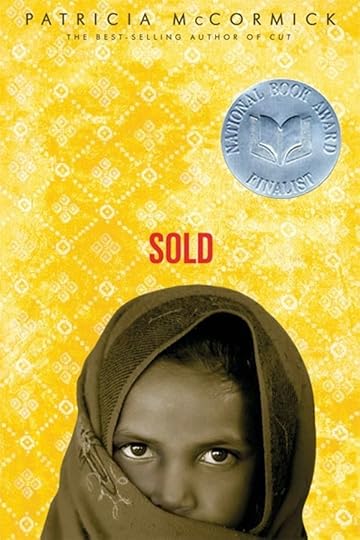 Sold by Patricia McCormick
Sold by Patricia McCormick
This isn't a new title, and it's not one that hasn't gone unnoticed or not earned accolades. That's for good reason. This is a powerful novel in verse about human trafficking and prostitution.
Thirteen year old Lakshmi lives in Nepal, and when a devastating
monsoon destroys her family's crops, her step-father informs her that her duty is to help the family recover from this tragedy. While she's under the impression that she's being sent to do work a a maid, the truth is, she's being sold into prostitution in India.
It's a harsh, cruel, and brutal world, but Lakshmi does what she can to endure. She's able to at least try to foster friendships with the other girls in the brothel.
Sold is horrifying and heart-wrenching, and it's not necessarily the kind of story with a happy ending to it. What's left unsaid because of the verse style of the novel is as painful as those things which are said and described. Likewise, despite being a fictional novel, it's clear that McCormick has done her research on the truth behind stories like Lakshmi's, and she's unflinching in what she presents as the truth of her experiences as a child sold into prostitution.
Though not a personal favorite read of mine, it's one that I am still thinking about months later. It's powerful, and it's the kind of story any reader curious about the ongoings in other parts of the world should read. But, of course, they shouldn't read it for just that. Because as much as we want to believe this is an issue "in other places," it still happens in the places with which we have great familiarity.
 Half the Sky: Turning Oppression into Opportunity for Women Worldwide by Nicholas D. Kristof and Sheryl WuDunn
Half the Sky: Turning Oppression into Opportunity for Women Worldwide by Nicholas D. Kristof and Sheryl WuDunn
So what can be done about oppression and the horrific abuses women suffer around the world? Kristof and WuDunn delve into what we can do and how we can do it in their work.
I should note before diving into this a bit more than this book didn't work for me. It's really brutal, even more so than Sold, and I had a problem more specifically with how these women's stories of being hurt and broken and abused were coaxed out of them in a way that I felt took the power away from the victim and instead gave it to Kristof and WuDunn. But I note that this was my personal bias in the reading and it came up because this book is PACKED with these sorts of stories -- it's not an easy read nor is it a gentle one and it's not meant to be either of those things.
That said, this is the kind of book any reader interested in social justice, particularly on a global scale, should pick up. It gives a broad perspective of practical things that can be done to help make the world a little bit of a safer place for women who endure brutality. It puts a real face and story to the ones told by McCormick in Sold. I should be fair in stating, too, that alongside the really tough reads are stories about how many women recovered from their positions and situations. Those are, of course, meant to be a call to action.
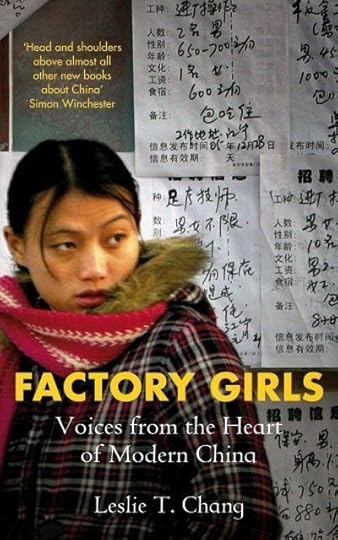 Factory Girls: Voices from the Heart of Modern China by Leslie T. Chang
Factory Girls: Voices from the Heart of Modern China by Leslie T. Chang
When you think of China, what do you think? What about those stickers littering your clothes or on toys that proclaim "made in China?"
Chang enters into migrant China and follows two girls through their “careers” in the factory/migrant world. Min and Chunming represent the girls who leave their village homes and seek work in the cities inside factories that run them dry, pay them little, and “own” them. But what’s most fascinating is how Chang doesn’t necessarily look at this as a negative thing in and of itself; these girls see these jobs as upward mobility in China. This exploration of China’s social situations and work/personal lives is fascinating, heartbreaking, and -- surprisingly -- somewhat hopeful. Although I found Chang’s personal history in here boring (I skimmed those few chapters), I see how they relate and tie into the greater story.
A great book for considering not just the social world of China, but how China’s changed and evolved in the last few decades, how the population has adapted to this, what promise and hope look like for young women who aren’t attending colleges/universities, and it’s also a means of reflecting upon our own choices in what we purchase and use product-wise in America. We consume the goods these girls take part in making; how does and should this impact us here, knowing what those jobs there might mean?
 Girl in Translation by Jean Kwok
Girl in Translation by Jean Kwok
Going back to fiction and back to the US momentarily, Kwok's novel focuses on the double life which immigrants to this country can sometimes lead.
Kimberly Chang and her mother arrived in Brooklyn from Hong Kong poor but eager to get away from their home country. They're set up in an apartment of squalor. During the day, Kimberly is an immensely talented and eager school girl. From that, it would appear she's living the American Dream, but it's far from that.
At night, Kimberly works in the factories and hopes to help supplement the income her mother has in order for them to stay afloat in their new home. She's obligated to help, and in the process of this work, Kimberly comes to a number of realizations about how much responsibility falls on her to help make life in this country possible. There is a romance that emerges in the story, as well, and it's in these scenes where readers get a real sense of the challenges faced -- no matter which decision or opportunities Kimberly pursues, she's going to have to work hard and make significant sacrifices.
What happens, too, when someone finds out about your real home life and it doesn't match the face you present in the classroom?
Girl in Translation makes for a really interesting read against Factory Girls. While they're set in entirely different worlds, what these girls do and don't do reflect the realities of their worlds in ways that make them almost more similar than they make them different.
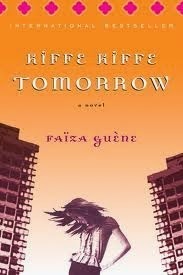 Kiffe Kiffe Tomorrow by Faiza Guene
Kiffe Kiffe Tomorrow by Faiza Guene
If I had to pick a single book I read over the course of OBCB work that stood out to me the most, it would be Guene's novel. I'd put it off for quite a while because I had no idea what it was about (the title and the cover didn't attract me) but when I picked it up, I read it in a single sitting.
What a little gem of a book. This was published adult but has mega YA appeal, as it's about a 15-year-old Doria growing up in the projects about half an hour from Paris. While we have our romantic notions of what Paris is like, that notion is best left to what Paris is -- not the suburban landscape.
Doria's dealing with her father ditching her and her mother, who is illiterate, as he heads back to Morocco in order to attempt marrying a woman who can sire him a son (that's all that matters in his culture). It deals with urban issues in a way that's cross-cultural, about the challenges of growing up between cultures, and what it means to figure out who you are and what you do when your world's been blown apart. It looks at what happens when the people you've come to know and rely on for certain things -- their always being there, their always NOT being there -- change and mold into their own lives and new paths, too.
Doria's voice is amazing: it's funny, but also deeply hurting and that hurt comes in those really funny moments, making them even more searing. Doria's not one of those girls who is a miracle, and I think that's what made it resonate so much. She's NOT good at school and she doesn't care. But it doesn't at all make her worthless or driftless. She's 15 and only trying to figure it out as best she can. Even when the school reassigns her to a trade she doesn't care about, Doria's actions and reactions are real and authentic to who she was.
The reason this particular novel was one we talked about and thought was worthwhile for including on OBCB was not just the voice, but that it showcased a girl whose cultural identity is one we don't often see. She's poor, she's part French and part Moroccan, and she lives on the outskirts of one of the most romanticized, lauded cities in the world.
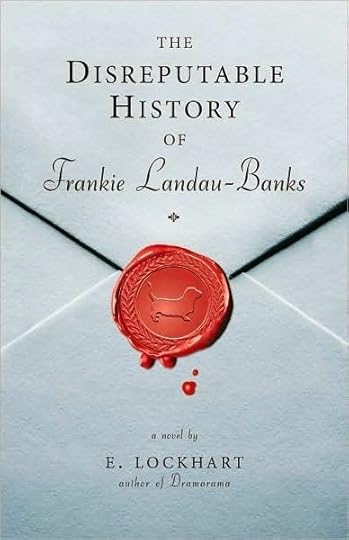
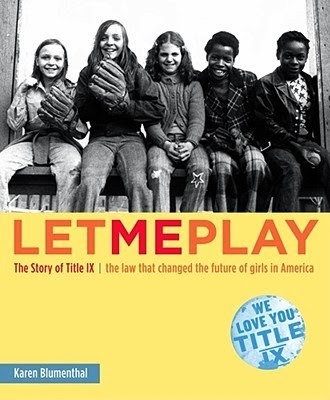

Three other female-lead and female-centric titles that fit within this idea of girls across borders include the following:
The Disreputable History of Frankie Landau-Banks by E. Lockhart
There's not much I need to say about why this book fits not only on the OBCB list (it's in the literature and languages category) nor about why it fits within this post about girls across borders. Frankie's a girl who takes charge, gets things done, and does so despite what stands in her way. While fictional and the stakes that exist in the real-life stories discussed above aren't as high, this is the type of book that fits into the conversation, if it's not a gateway to the larger conversation about social constructs, gender, and about girls breaking down borders.
Let Me Play: The Story of Title IX, The Law That Changed the Future of Girls in America by Karen Blumenthal
Blumenthal's non-fiction title, which skews much younger than the other titles on this list, is a carry over from the 2009 list. It's an excellent look at how Title IX came to be and how women earned their rightful place in sports and athletic history. Here is how girls spoke up and out, despite the challenges standing before them. What keeps this book particularly interesting is how well the photos and sidebars are used and placed throughout.
Rookie Yearbook One edited by Tavi Gevinson
I nominated this title not having read it and wondering if maybe I'd nominated something that had no chance or place on our list. But I was wrong. This book, which is on the arts and humanities list, is such a fantastic guide to pop culture, to counter pop culture, to fashion, and to music. More than that -- and I think why this is such a perfect fit for the OBCB list, as well as for this roundup of titles in particular -- is that it explores "big issues" that teen girls face. It tackles figuring out what you want to do with your life, how to begin and end friendships, as well as sexuality, dating, and more. Tavi and her fellow writers have their fingers on the pulse of being a teen girl, and while things like makeup tips or fashion photo shoots won't capture the interest of all girls who pick up this title, there are powerful pieces in here that will speak to them. This isn't a book you sit and read cover to cover; it's more a book you pick up and read when you feel like you need to talk to someone who will get you and offer you some really worthwhile advice or food for thought on life stuff. A big thumbs up, too, for this book featuring models of many colors and more than one shape.
Earlier title roundups of books on the Outstanding Books for the College Bound list I've talked include titles tackling music and musicality, football and football culture, and religion and spirituality.






 Related StoriesMusic and Musicality: Reviews from the Outstanding Books for the College Bound ListRecent YA ReadsEnders by Lissa Price
Related StoriesMusic and Musicality: Reviews from the Outstanding Books for the College Bound ListRecent YA ReadsEnders by Lissa Price
 Sold by Patricia McCormick
Sold by Patricia McCormickThis isn't a new title, and it's not one that hasn't gone unnoticed or not earned accolades. That's for good reason. This is a powerful novel in verse about human trafficking and prostitution.
Thirteen year old Lakshmi lives in Nepal, and when a devastating
monsoon destroys her family's crops, her step-father informs her that her duty is to help the family recover from this tragedy. While she's under the impression that she's being sent to do work a a maid, the truth is, she's being sold into prostitution in India.
It's a harsh, cruel, and brutal world, but Lakshmi does what she can to endure. She's able to at least try to foster friendships with the other girls in the brothel.
Sold is horrifying and heart-wrenching, and it's not necessarily the kind of story with a happy ending to it. What's left unsaid because of the verse style of the novel is as painful as those things which are said and described. Likewise, despite being a fictional novel, it's clear that McCormick has done her research on the truth behind stories like Lakshmi's, and she's unflinching in what she presents as the truth of her experiences as a child sold into prostitution.
Though not a personal favorite read of mine, it's one that I am still thinking about months later. It's powerful, and it's the kind of story any reader curious about the ongoings in other parts of the world should read. But, of course, they shouldn't read it for just that. Because as much as we want to believe this is an issue "in other places," it still happens in the places with which we have great familiarity.
 Half the Sky: Turning Oppression into Opportunity for Women Worldwide by Nicholas D. Kristof and Sheryl WuDunn
Half the Sky: Turning Oppression into Opportunity for Women Worldwide by Nicholas D. Kristof and Sheryl WuDunnSo what can be done about oppression and the horrific abuses women suffer around the world? Kristof and WuDunn delve into what we can do and how we can do it in their work.
I should note before diving into this a bit more than this book didn't work for me. It's really brutal, even more so than Sold, and I had a problem more specifically with how these women's stories of being hurt and broken and abused were coaxed out of them in a way that I felt took the power away from the victim and instead gave it to Kristof and WuDunn. But I note that this was my personal bias in the reading and it came up because this book is PACKED with these sorts of stories -- it's not an easy read nor is it a gentle one and it's not meant to be either of those things.
That said, this is the kind of book any reader interested in social justice, particularly on a global scale, should pick up. It gives a broad perspective of practical things that can be done to help make the world a little bit of a safer place for women who endure brutality. It puts a real face and story to the ones told by McCormick in Sold. I should be fair in stating, too, that alongside the really tough reads are stories about how many women recovered from their positions and situations. Those are, of course, meant to be a call to action.
 Factory Girls: Voices from the Heart of Modern China by Leslie T. Chang
Factory Girls: Voices from the Heart of Modern China by Leslie T. ChangWhen you think of China, what do you think? What about those stickers littering your clothes or on toys that proclaim "made in China?"
Chang enters into migrant China and follows two girls through their “careers” in the factory/migrant world. Min and Chunming represent the girls who leave their village homes and seek work in the cities inside factories that run them dry, pay them little, and “own” them. But what’s most fascinating is how Chang doesn’t necessarily look at this as a negative thing in and of itself; these girls see these jobs as upward mobility in China. This exploration of China’s social situations and work/personal lives is fascinating, heartbreaking, and -- surprisingly -- somewhat hopeful. Although I found Chang’s personal history in here boring (I skimmed those few chapters), I see how they relate and tie into the greater story.
A great book for considering not just the social world of China, but how China’s changed and evolved in the last few decades, how the population has adapted to this, what promise and hope look like for young women who aren’t attending colleges/universities, and it’s also a means of reflecting upon our own choices in what we purchase and use product-wise in America. We consume the goods these girls take part in making; how does and should this impact us here, knowing what those jobs there might mean?
 Girl in Translation by Jean Kwok
Girl in Translation by Jean KwokGoing back to fiction and back to the US momentarily, Kwok's novel focuses on the double life which immigrants to this country can sometimes lead.
Kimberly Chang and her mother arrived in Brooklyn from Hong Kong poor but eager to get away from their home country. They're set up in an apartment of squalor. During the day, Kimberly is an immensely talented and eager school girl. From that, it would appear she's living the American Dream, but it's far from that.
At night, Kimberly works in the factories and hopes to help supplement the income her mother has in order for them to stay afloat in their new home. She's obligated to help, and in the process of this work, Kimberly comes to a number of realizations about how much responsibility falls on her to help make life in this country possible. There is a romance that emerges in the story, as well, and it's in these scenes where readers get a real sense of the challenges faced -- no matter which decision or opportunities Kimberly pursues, she's going to have to work hard and make significant sacrifices.
What happens, too, when someone finds out about your real home life and it doesn't match the face you present in the classroom?
Girl in Translation makes for a really interesting read against Factory Girls. While they're set in entirely different worlds, what these girls do and don't do reflect the realities of their worlds in ways that make them almost more similar than they make them different.
 Kiffe Kiffe Tomorrow by Faiza Guene
Kiffe Kiffe Tomorrow by Faiza GueneIf I had to pick a single book I read over the course of OBCB work that stood out to me the most, it would be Guene's novel. I'd put it off for quite a while because I had no idea what it was about (the title and the cover didn't attract me) but when I picked it up, I read it in a single sitting.
What a little gem of a book. This was published adult but has mega YA appeal, as it's about a 15-year-old Doria growing up in the projects about half an hour from Paris. While we have our romantic notions of what Paris is like, that notion is best left to what Paris is -- not the suburban landscape.
Doria's dealing with her father ditching her and her mother, who is illiterate, as he heads back to Morocco in order to attempt marrying a woman who can sire him a son (that's all that matters in his culture). It deals with urban issues in a way that's cross-cultural, about the challenges of growing up between cultures, and what it means to figure out who you are and what you do when your world's been blown apart. It looks at what happens when the people you've come to know and rely on for certain things -- their always being there, their always NOT being there -- change and mold into their own lives and new paths, too.
Doria's voice is amazing: it's funny, but also deeply hurting and that hurt comes in those really funny moments, making them even more searing. Doria's not one of those girls who is a miracle, and I think that's what made it resonate so much. She's NOT good at school and she doesn't care. But it doesn't at all make her worthless or driftless. She's 15 and only trying to figure it out as best she can. Even when the school reassigns her to a trade she doesn't care about, Doria's actions and reactions are real and authentic to who she was.
The reason this particular novel was one we talked about and thought was worthwhile for including on OBCB was not just the voice, but that it showcased a girl whose cultural identity is one we don't often see. She's poor, she's part French and part Moroccan, and she lives on the outskirts of one of the most romanticized, lauded cities in the world.



Three other female-lead and female-centric titles that fit within this idea of girls across borders include the following:
The Disreputable History of Frankie Landau-Banks by E. Lockhart
There's not much I need to say about why this book fits not only on the OBCB list (it's in the literature and languages category) nor about why it fits within this post about girls across borders. Frankie's a girl who takes charge, gets things done, and does so despite what stands in her way. While fictional and the stakes that exist in the real-life stories discussed above aren't as high, this is the type of book that fits into the conversation, if it's not a gateway to the larger conversation about social constructs, gender, and about girls breaking down borders.
Let Me Play: The Story of Title IX, The Law That Changed the Future of Girls in America by Karen Blumenthal
Blumenthal's non-fiction title, which skews much younger than the other titles on this list, is a carry over from the 2009 list. It's an excellent look at how Title IX came to be and how women earned their rightful place in sports and athletic history. Here is how girls spoke up and out, despite the challenges standing before them. What keeps this book particularly interesting is how well the photos and sidebars are used and placed throughout.
Rookie Yearbook One edited by Tavi Gevinson
I nominated this title not having read it and wondering if maybe I'd nominated something that had no chance or place on our list. But I was wrong. This book, which is on the arts and humanities list, is such a fantastic guide to pop culture, to counter pop culture, to fashion, and to music. More than that -- and I think why this is such a perfect fit for the OBCB list, as well as for this roundup of titles in particular -- is that it explores "big issues" that teen girls face. It tackles figuring out what you want to do with your life, how to begin and end friendships, as well as sexuality, dating, and more. Tavi and her fellow writers have their fingers on the pulse of being a teen girl, and while things like makeup tips or fashion photo shoots won't capture the interest of all girls who pick up this title, there are powerful pieces in here that will speak to them. This isn't a book you sit and read cover to cover; it's more a book you pick up and read when you feel like you need to talk to someone who will get you and offer you some really worthwhile advice or food for thought on life stuff. A big thumbs up, too, for this book featuring models of many colors and more than one shape.
Earlier title roundups of books on the Outstanding Books for the College Bound list I've talked include titles tackling music and musicality, football and football culture, and religion and spirituality.







 Related StoriesMusic and Musicality: Reviews from the Outstanding Books for the College Bound ListRecent YA ReadsEnders by Lissa Price
Related StoriesMusic and Musicality: Reviews from the Outstanding Books for the College Bound ListRecent YA ReadsEnders by Lissa Price
Published on March 27, 2014 22:00
March 26, 2014
March Debut YA Novels

It's that time again to roundup the debut novels out this month. As we get into the new few months, prepare your to-be-read piles to explode, as more debuts will be popping up over the next three or four months. I define debut as I have in the past: the author has not published another novel before, so this YA title is their first across any category or genre.
I'm pretty sure I'll miss something, so feel free to let me know of other traditionally published debut novels out in March in the comments. All descriptions come from WorldCat.
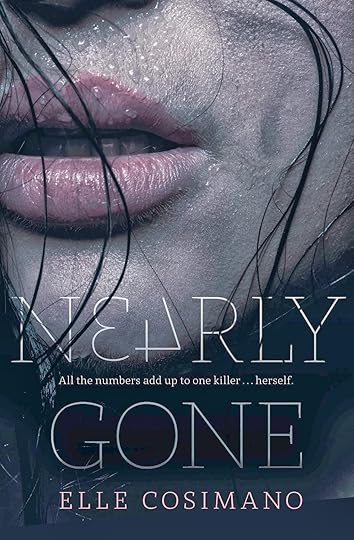
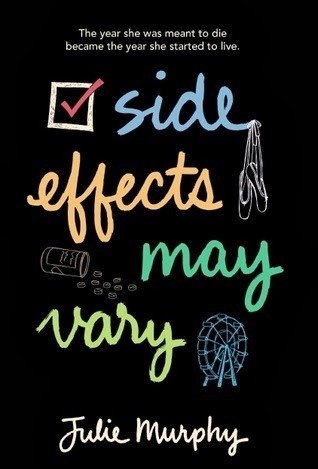
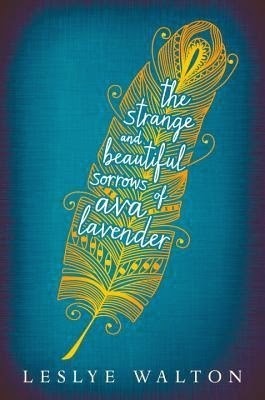
Nearly Gone by Elle Cosimano: A math-whiz from a trailer park discovers she's the only student capable of unravelling complex clues left by a serial killer who's systematically getting rid of her classmates.
Side Effects May Vary by Julie Murphy: Alice is ready to go out in a blaze of glory, but then she discovers she's in remission from cancer and she must deal with all of the mistakes she's made and the people she's hurt.
The Strange and Beautiful Sorrows of Ava Lavender by Leslye Walton: Born with bird wings, Ava Lavender is well aware that love has long made fools of her family. When pious Nathaniel Sorrows mistakes her bird wings for angel wings, 16-year-old Ava faces the man's growing obsession, which comes to a head with the rain and feathers that fly through the air during a nighttime summer solstice celebration.
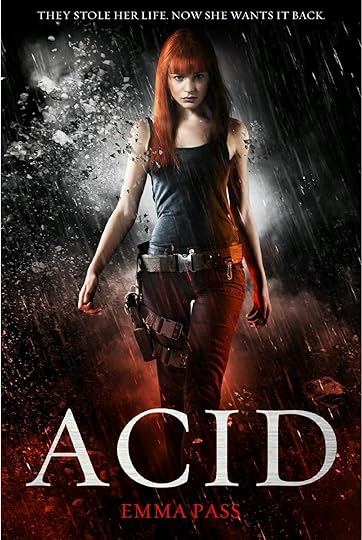


ACID by Emma Pass: 2113. In Jenna Strong's world, ACID - the most brutal, controlling police force in history - rule supreme. No throwaway comment or muttered dissent goes unnoticed - or unpunished. And it was ACID agents who locked Jenna away for life, for a bloody crime she struggles to remember. The only female inmate in a violent high-security prison, Jenna has learned to survive by any means necessary. And when a mysterious rebel group breaks her out, she must use her strength, speed and skill to stay one step ahead of ACID - and to uncover the truth about what really happened on that dark night two years ago.
Liv, Forever by Amy Talkington: Soon after an art scholarship gets Liv a place at prestigious Wickham Hall, she becomes the latest victim of a dark conspiracy spanning 150 years, but her ghost, aided by friend Gabe and boyfriend Malcolm, tries to put a stop to the killing.
Nil by Lynne Matson: Transported through a "gate" to the mysterious island of Nil, seventeen-year-old Charley has 365 days to escape--or she will die.
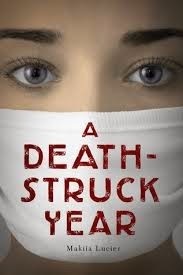
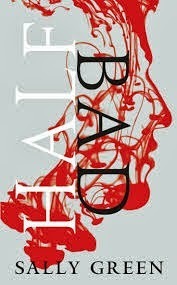
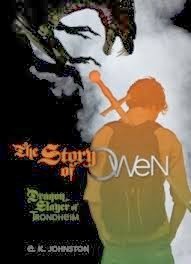
A Death-Struck Year by Makiia Lucier: When the Spanish influenza epidemic reaches Portland, Oregon, in 1918, seventeen-year-old Cleo leaves behind the comfort of her boarding school to work for the Red Cross.
Half Bad by Sally Green:In modern-day England, where witches live alongside humans, Nathan, son of a White witch and the most powerful Black witch, must escape captivity before his seventeenth birthday and receive the gifts that will determine his future.
The Story of Owen by E. K. Johnston: In an alternate world where industrialization has caused many species of carbon-eating dragons to thrive, Owen, a slayer being trained by his famous father and aunt, and Siobahn, his bard, face a dragon infestation near their small town in Canada.
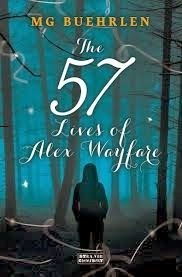
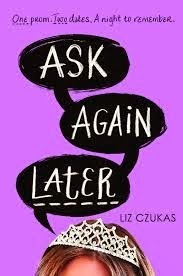

The 57 Lives of Alex Wayfare by M. G. Buehrlen: For as long as Alex Wayfare can remember, she has had visions of the past. Vivid visions that make her feel like she's really on a ship bound for America, or riding the original Ferris wheel at the World's Fair. It isn't until she meets Porter, a stranger who knows more than should be possible about her, that she learns the truth; her visions aren't really visions. Alex is a Descender -- capable of traveling back in time to her past lives. But the more she descends, the more it becomes apparent that someone doesn't want Alex to travel again. And they will stop at nothing to make this life, her fifty-seventh, her last.
Ask Again Later by Liz Czukas: Instead of a "No Drama Prom-a" with a group of friends, seventeen-year-old Heart LaCoeur must choose between two boys with good reasons for asking her, but a flip of a coin leads not to one date but two complete--and very different--prom nights.
Gilded by Christina Farley: Sixteen-year-old Jae Hwa Lee is a Korean-American girl with a black belt, a deadly proclivity with steel-tipped arrows, and a chip on her shoulder the size of Korea itself. When her widowed dad uproots her to Seoul from her home in L.A., Jae thinks her biggest challenges will be fitting into a new school and dealing with her dismissive Korean grandfather. Then she discovers that a Korean demi-god, Haemosu, has been stealing the soul of the oldest daughter of each generation in her family for centuries. And she's next.
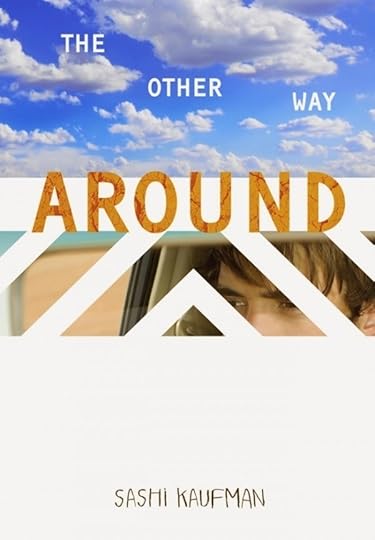

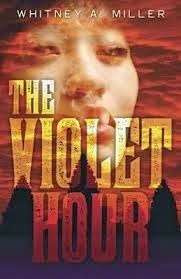
The Other Way Around by Sashi Kaufman: To escape his offbeat family at Thanksgiving, Andrew West accepts a ride from a band of street performers who get their food and clothing from dumpsters, but as he learns more about these "Freegans" he sees that one cannot outrun the past.
The Secret Side of Empty by Maria E. Andreu: M.T. is a high-achieving high school student, who hiding the fact that she's an undocumented immigrant in the United States.
The Violet Hour by Whitney A. Miller: Seventeen-year-old Harlow Wintergreen, plagued by mental voices and visions while traveling through Asia, must confront the evil sources of them when the hallucinations start bleeding into reality.







 Related StoriesCrossing the Line: Adult-Teen Relationships in YA Fiction and BeyondGirls Kicking Ass With Their Brains: Guest Post by Sarah StevensonGet Genrefied: Fairy Tale Re-tellings
Related StoriesCrossing the Line: Adult-Teen Relationships in YA Fiction and BeyondGirls Kicking Ass With Their Brains: Guest Post by Sarah StevensonGet Genrefied: Fairy Tale Re-tellings
Published on March 26, 2014 22:00
March 25, 2014
The Hazards of Book to Film Adaptations: Further Reflections on Attempted Rape in Divergent
 Shailene Woodley and Theo James in a still from Divergent, courtesy of Summit.
Shailene Woodley and Theo James in a still from Divergent, courtesy of Summit.I wrote about the Divergent movie last week and touched only briefly upon the problematic attempted rape scene that was inserted into Tris’ final fear landscape. Since then, many more people have seen the film and weighed in on this scene. Some, like Beth Lalonde at Medium, found the scene empowering. Lalonde’s piece is extremely personal, and because of that, it’s impossible to write off her reaction as “wrong.” But the piece is problematic since it doesn’t put the scene in context with its source material – the book.
As readers, we have to be careful about how we judge movies made from the books we love. The movie is not the book, nor should it be. They’re different mediums and communicate in different ways. I think book fans are often too quick to denigrate film adaptations for simply deviating from the source material that they love. A film must deviate from the book, and sometimes these deviations must be major ones in order for the film to work as a film.
That said, we cannot look at a film completely on its own. As viewers, we have the right – perhaps even the responsibility – to compare the two and decide whether the changes the filmmakers decided upon worked, whether they served the story and its characters.
It would appear Lalonde hasn’t read the book, which is fine. The movie wouldn’t be successful if it only attracted readers of the novel. But when I consider the fact that there is no such scene in the book, I must then ask “Why did the filmmakers feel it was necessary to put this in there?”
From there, I speculate. Maybe one day an interviewer will ask the screenwriter or the director or whoever was responsible for the scene about its inclusion, but until then, speculate is all I can do.
The kindest answer to my question may be that the filmmakers thought it would be too difficult to communicate Tris’ fear of sexual intimacy – or just affection in general – on the big screen. The book is told in first-person, making insights into Tris’ mind natural and easy. Here’s an excerpt:
My fear is being with him. I have been wary of affection all my life, but I didn’t know how deep that wariness went.
But this obstacle doesn’t feel the same as the others. It is a different kind of fear – nervous panic rather than blind terror.
He slides his hands down my arms and then squeezes my hips, his fingers sliding over the skin just above my belt, and I shiver.
I gently push him back and press my hands to my forehead. I have been attacked by crows and men with grotesque faces; I have been set on fire by the boy who almost threw me off a ledge; I have almost drowned – twice – and this is what I can’t cope with? This is the fear I have no solutions for – a boy I like, who wants to…have sex with me?
Simulation Tobias kisses my neck.
I try to think. I have to face the fear. I have to take control of the situation and find a way to make it less frightening.
I look Simulation Tobias in the eyes and say sternly, “I am not going to sleep with you in a hallucination. Okay?”
Perhaps the filmmakers thought that showing the beginning of a consensual sexual act – which is stopped by words, not violence – would be confusing for viewers without this narration, that viewers would be left wondering why on earth Tris fears something that looks so nice.
I think this is probably the most likely explanation, but it’s also confusing to me as a reader, a viewer, and someone who used to be a teenager. There may be nothing more terrifying than having sex for the first time, even with someone who respects your boundaries, as Four clearly does with Tris (both in the book and in the movie). Just because something feels good doesn’t mean it’s not also scary; the two are not mutually exclusive.
This fear would have come across just fine on the screen, had the filmmakers given it a shot. Woodley is a fine actress, and this fear is so nearly universal, it would be easy for viewers to relate to it and understand it. After all, we already know that it’s Tris’ fear landscape, which means we already know that the things in it are meant to be frightening. It wouldn’t take a great logical leap to conclude that Tris is afraid of sexual intimacy.
Rather than simply omitting this scene, which the filmmakers may have deemed too difficult to convey on film, they chose to make it into something else. Perhaps they did not intend to explicitly tell readers and viewers that they felt Tris’ fear of sexual intimacy was equivalent to fear of rape, but by making the choice to exclude the book’s scene and create the attempted rape scene, that’s exactly what they have done.
The less charitable part of me has another answer to my question: that the scene was created to heighten the drama, to show how tough Tris can be, because rape is, as we’ve all been told over and over, the worst thing that could happen to a girl or woman. Therefore, we may conclude, this is the ultimate test of a female Dauntless. The Four in the movie simulation even says something to that effect, taunting Tris, “Aren’t you a Dauntless?”
If this is the reason, it’s lazy. It fails to dig deep into the characters and show us a fear – a really scary one – that Tris may have based upon her unique personality and situation. This is not a change that serves the characters or their story. What’s more, it doesn’t function well even when considered separately from the book. There’s no precedent for Four committing sexual violence given to us in the film. He willingly backs off when Tris asks him to. He puts no pressure on her to take it further than she wants. Perhaps the filmmakers assumed that all girls innately fear rape, but then why wasn’t it perpetrated by Peter or one of the masked attackers assisting Al? She certainly has reason to fear those people, though again, their violence did not have sexual overtones previously in the film. (Note that I don’t think this is what the filmmakers should have done either, but it would have been truer to the characters as they were portrayed on the screen.)
Melissa Montovani at YA Bookshelf writes about this in her three-part series focusing on this scene. It’s a thorough and respectful piece, which both responds to Lalonde and expounds upon the many different ways this added scene is problematic. She talks a lot about how it actually reinforces rape culture, teaching girls and women that they should be afraid of a boy or man with whom they previously felt safe, as well as putting the onus of not getting raped on the victim. It’s well worth a read and adds the necessary context that Lalonde’s piece is missing.
I know there will be a lot more discussion of this in the coming weeks. If you have thoughts or opinions, I’d like to read them in the comments.








Published on March 25, 2014 22:00
March 24, 2014
Crossing the Line: Adult-Teen Relationships in YA Fiction and Beyond
In Saturday's Links of Note roundup, I pulled together some of the posts making rounds regarding the sexual misconduct scandal within DFTBA records. If you aren't completely up on what's going on -- and I have to admit, I'm not entirely clear on everything happening either -- here's a piece that'll give the rundown as it started. This is a story that has many layers to it, and I think that Jeanne has done a pretty good job breaking some more of them down in her post (and the subsequent update she's linked to). Read this, as well as the comments. Her background is within the fandom perspective, which is an arena I know little about.
But what's stood out to me over the course of this is less the allegations of sexual abuse -- which isn't to say that's not important because it certainly is -- but instead, I've found myself fascinated by an organization which is run primarily (entirely?) by men who serve a primarily teen audience and fan base. There is nothing wrong with that, but it leads to a lot of questions about how those who are older than eighteen can or should interact with their underage audiences. This isn't only about DFTBA; it's about any situation where adults work with or for or come in contact with teens in some capacity.
I was a teen girl once. I was a teen girl who loved male acoustic singers, and I was lucky enough to be able to go to a lot of concerts growing up. I lived close enough to Chicago to make this a reality, and I'd earned enough trust to go, whether with an adult or by myself/with a group of friends. I never thought a whole lot about the fact that I was under 18 and going and seeing these men who were in their late 20s and 30s performing. Many times because of my working for the high school newspaper, I was able to get in touch with these artists and set up either web-based or in-person interviews.
I never found it weird to talk with them after a show or ask for an autograph or ask a few questions or even approach them for a hug. It never occurred to me that that could be uncomfortable. I was a teen girl and expressing my interest and my passion for music and the art someone else was making.
One night after a show, I'd had such a good time and had a chance to talk with the singer afterwards, mentioning that I was really bummed I couldn't go to his show the next night since it was a 21 and older only spot. I'd been there with my mom, and rather than invite me to come to the show anyway, he talked with my mom and said if she was willing to come with me, he'd sneak me in to sell merch for the show that night.
But this was after he talked with my mom.
Of course then it didn't seem like a big deal to me, but in thinking about that moment now, it was exactly the right thing for him to do. Rather than invite me personally or offer to sneak me in, he asked my mom for approval and asked if she would come with me to do so. He didn't lead me on and he didn't try to make promises for me. He set up some clear boundaries and expectations immediately in order to protect not just himself but to protect me, as well.
Barry Lyga wrote two really great posts last week talking about being in the sort of position where he's regularly interacting with teenagers. The first, which you should read here, set off a lot of questions and discussion. Was he being too strict in having a "no hugs" policy? He followed up with a response to the things people asked or said to him -- primarily to those who thought his approach was far too rigid and strict -- in this post. The golden piece is this quote: "Why do we presume men are guilty? Dunno, but here’s the thing: until it changes, I’m not going to pretend it hasn’t changed. Change comes first —then hugs."
What Lyga speaks to isn't the presumption of guilt. He's not calling men the problem. He's instead pointing out that we do live in a world where bad things happen and rather than contribute to that, his policy is simply hands off. Does it mean sometimes a teen doesn't get what he or she wants? Something that could make his or her day or week or year? Certainly.
In his own words: "A part of respect in a relationship between an adult and a minor is acknowledging the power imbalance and setting reasonable boundaries. We can quibble about the nature and tone of those boundaries, but I don’t think we should quibble about their necessity."
This is where I find myself most fascinated by the DFTBA community and the events going on within it right now. There is a power imbalance. While we're most familiar with imbalances that put someone in a position to hold their power over the heads of others, what is going on here is a power imbalance that's never been considered: those who have power don't see themselves in that way. It's not that they should feel guilty or bad for what happened. It's that the possibility of what could happen in such a position wasn't at the forefront and wasn't considered.
There was no blanket manner of dealing with issues that could arise because the idea that they could arise wasn't something that they thought about.
No matter how cool a 15 year old might be, a 22 year old shouldn't be anything more than a 22 year old adult with that person. Gender does and doesn't matter here. It matters because there's certainly additional power imbalances when it's a sexually-charged relationship, but it doesn't matter because there is a clear line of legality regardless of the type of relationship being pursued. It can go either or both ways -- older men or older women and/or younger boy or younger girl.
What's interesting in this particular instance is the language used to describe the teenager. She is not a teenager, nor is she a girl. She's a young woman. There is a power construct in the word choice, whether intentional or not. Regardless of how cool or polished she comes off, she's still a teenager. When I think about when I was a teenager, I was fueled by my feelings, especially in regards to how I was being talked to and treated by "cool" adults. I loved that respect and attention.
But it didn't change the fact I was a teenager and not a young woman.
In thinking about relationships between adults and teenagers, I thought rather than try to deconstruct this further, it'd be worthwhile to build a short reading list of books that explore these relationships. In some instances, the imbalance is clear and the lines of right and wrong are crisp. In others, it's not as clear. Descriptions come from WorldCat, and I've elaborated a little bit, too, about why these books are worthwhile reading and discussion fodder, especially in light of what's happening in the DFTBA community.
Please feel free to offer up other titles that showcase adult-teen relationships and the power (im)balances within them. I'd love to have a nice resource list because I think that this is a topic that doesn't get talked about much but offers a lot of places for empowering not just teenagers, but adults, as well.
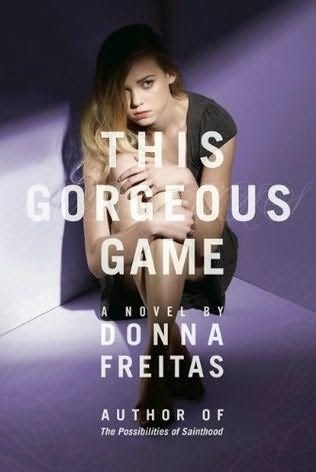

This Gorgeous Game by Donna Freitas
Seventeen-year-old Olivia Peters, who dreams of becoming a writer, is thrilled to be selected to take a college fiction seminar taught by her idol, Father Mark, but when the priest's enthusiasm for her writing develops into something more, Olivia shifts from wonder to confusion to despair.
In Freitas's novel, Olivia wants the approval of her idol so bad, she'll go to the ends of the Earth to earn it. The problem is that Father Mark takes complete advantage of her desires and manipulates Olivia in the worst possible ways. Olivia is and is not entirely on to what's going on. She believes that in order to achieve, she has to listen and follow with the instructions she's given, even if it feels weird or creepy or wrong. What complicates the matter further is how well respected Father Mark is not just in the community, but in Olivia's family in particular.
The Lucy Variations by Sara Zarr
Sixteen-year-old San Franciscan Lucy Beck-Moreau once had a promising future as a concert pianist. Her chance at a career has passed, and she decides to help her ten-year-old piano prodigy brother, Gus, map out his own future, even as she explores why she enjoyed piano in the first place.
Zarr's novel doesn't seem like it would have this element to it, but it does. Lucy's become a little bit smitten with one of her teachers, and there is a clear exploration of what the lines of appropriate and inappropriate are as it comes to their relationship. What I think is most noteworthy here is how much Lucy seeks that approval and admiration from an older male. He's cool and she loves the attention he can give her. That desire in her is, at times, hard to separate from the fact she's 16.

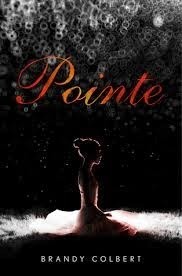
Love and Other Perishable Items by Laura Buzo
A fifteen-year-old Australian girl gets her first job and first crush on her unattainable university-aged co-worker, as both search for meaning in their lives.
What Buzo's novel does is offer us the perspective of both the boy and the girl. We have a fifteen year old girl who is enamored by her coworker, who is in his early 20s and who enjoys hanging out and talking with her. But he understands clearly where the lines are in their relationship. He isn't interested in her beyond talking and being friendly. He won't pursue a deeper relationship with her and he certainly isn't interested in leading her on nor holding his power over her head. He thinks she's cool and she's very smart, but he's well attune to their age difference.
Pointe by Brandy Colbert (available April 10)
Four years after Theo's best friend, Donovan, disappeared at age thirteen, he is found and brought home and Theo puts her health at risk as she decides whether to tell the truth about the abductor, knowing her revelation could end her life-long dream of becoming a professional ballet dancer.
I'll have a lengthy, spoiler-laden review of Colbert's novel next week, but it's a title that fits within this list and does so in a bit of a different way. While we see the emotional tolls that happen in Freitas's and Zarr's novels, what happens in Colbert's novel is not only emotional, it's physical too. It takes Theo the entire novel to understand what happened to her and what ripple effects it had not only on her own well-being, but on the well-being of her best friend.
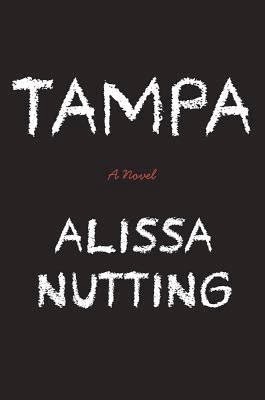
Though not for teen readers, Alissa Nutting's Tampa is another novel worth reading that delves into wildly inappropriate adult-teen relationships. I mention this title in conjunction with the YA ones because I think it gets at an aspect that I haven't talked too much about, which is gender. While the other novels have an older male at the forefront, Nutting's flips the script and has an older woman pursuing completely inappropriate relationships with teen boys. This is a challenging and squick-inducing read.
What other titles would you add to the list? While I think there's a lot worth exploring on the sexual abuse end (Pointe and Tampa fit there), I'd be particularly interested in titles where the power dynamic is on burgeoning non-sexual relationships.






 Related StoriesGirls Kicking Ass With Their Brains: Guest Post by Sarah StevensonYA Adaptations of Adult NovelsGet Genrefied: Fairy Tale Re-tellings
Related StoriesGirls Kicking Ass With Their Brains: Guest Post by Sarah StevensonYA Adaptations of Adult NovelsGet Genrefied: Fairy Tale Re-tellings
But what's stood out to me over the course of this is less the allegations of sexual abuse -- which isn't to say that's not important because it certainly is -- but instead, I've found myself fascinated by an organization which is run primarily (entirely?) by men who serve a primarily teen audience and fan base. There is nothing wrong with that, but it leads to a lot of questions about how those who are older than eighteen can or should interact with their underage audiences. This isn't only about DFTBA; it's about any situation where adults work with or for or come in contact with teens in some capacity.
I was a teen girl once. I was a teen girl who loved male acoustic singers, and I was lucky enough to be able to go to a lot of concerts growing up. I lived close enough to Chicago to make this a reality, and I'd earned enough trust to go, whether with an adult or by myself/with a group of friends. I never thought a whole lot about the fact that I was under 18 and going and seeing these men who were in their late 20s and 30s performing. Many times because of my working for the high school newspaper, I was able to get in touch with these artists and set up either web-based or in-person interviews.
I never found it weird to talk with them after a show or ask for an autograph or ask a few questions or even approach them for a hug. It never occurred to me that that could be uncomfortable. I was a teen girl and expressing my interest and my passion for music and the art someone else was making.
One night after a show, I'd had such a good time and had a chance to talk with the singer afterwards, mentioning that I was really bummed I couldn't go to his show the next night since it was a 21 and older only spot. I'd been there with my mom, and rather than invite me to come to the show anyway, he talked with my mom and said if she was willing to come with me, he'd sneak me in to sell merch for the show that night.
But this was after he talked with my mom.
Of course then it didn't seem like a big deal to me, but in thinking about that moment now, it was exactly the right thing for him to do. Rather than invite me personally or offer to sneak me in, he asked my mom for approval and asked if she would come with me to do so. He didn't lead me on and he didn't try to make promises for me. He set up some clear boundaries and expectations immediately in order to protect not just himself but to protect me, as well.
Barry Lyga wrote two really great posts last week talking about being in the sort of position where he's regularly interacting with teenagers. The first, which you should read here, set off a lot of questions and discussion. Was he being too strict in having a "no hugs" policy? He followed up with a response to the things people asked or said to him -- primarily to those who thought his approach was far too rigid and strict -- in this post. The golden piece is this quote: "Why do we presume men are guilty? Dunno, but here’s the thing: until it changes, I’m not going to pretend it hasn’t changed. Change comes first —then hugs."
What Lyga speaks to isn't the presumption of guilt. He's not calling men the problem. He's instead pointing out that we do live in a world where bad things happen and rather than contribute to that, his policy is simply hands off. Does it mean sometimes a teen doesn't get what he or she wants? Something that could make his or her day or week or year? Certainly.
In his own words: "A part of respect in a relationship between an adult and a minor is acknowledging the power imbalance and setting reasonable boundaries. We can quibble about the nature and tone of those boundaries, but I don’t think we should quibble about their necessity."
This is where I find myself most fascinated by the DFTBA community and the events going on within it right now. There is a power imbalance. While we're most familiar with imbalances that put someone in a position to hold their power over the heads of others, what is going on here is a power imbalance that's never been considered: those who have power don't see themselves in that way. It's not that they should feel guilty or bad for what happened. It's that the possibility of what could happen in such a position wasn't at the forefront and wasn't considered.
There was no blanket manner of dealing with issues that could arise because the idea that they could arise wasn't something that they thought about.
No matter how cool a 15 year old might be, a 22 year old shouldn't be anything more than a 22 year old adult with that person. Gender does and doesn't matter here. It matters because there's certainly additional power imbalances when it's a sexually-charged relationship, but it doesn't matter because there is a clear line of legality regardless of the type of relationship being pursued. It can go either or both ways -- older men or older women and/or younger boy or younger girl.
What's interesting in this particular instance is the language used to describe the teenager. She is not a teenager, nor is she a girl. She's a young woman. There is a power construct in the word choice, whether intentional or not. Regardless of how cool or polished she comes off, she's still a teenager. When I think about when I was a teenager, I was fueled by my feelings, especially in regards to how I was being talked to and treated by "cool" adults. I loved that respect and attention.
But it didn't change the fact I was a teenager and not a young woman.
In thinking about relationships between adults and teenagers, I thought rather than try to deconstruct this further, it'd be worthwhile to build a short reading list of books that explore these relationships. In some instances, the imbalance is clear and the lines of right and wrong are crisp. In others, it's not as clear. Descriptions come from WorldCat, and I've elaborated a little bit, too, about why these books are worthwhile reading and discussion fodder, especially in light of what's happening in the DFTBA community.
Please feel free to offer up other titles that showcase adult-teen relationships and the power (im)balances within them. I'd love to have a nice resource list because I think that this is a topic that doesn't get talked about much but offers a lot of places for empowering not just teenagers, but adults, as well.


This Gorgeous Game by Donna Freitas
Seventeen-year-old Olivia Peters, who dreams of becoming a writer, is thrilled to be selected to take a college fiction seminar taught by her idol, Father Mark, but when the priest's enthusiasm for her writing develops into something more, Olivia shifts from wonder to confusion to despair.
In Freitas's novel, Olivia wants the approval of her idol so bad, she'll go to the ends of the Earth to earn it. The problem is that Father Mark takes complete advantage of her desires and manipulates Olivia in the worst possible ways. Olivia is and is not entirely on to what's going on. She believes that in order to achieve, she has to listen and follow with the instructions she's given, even if it feels weird or creepy or wrong. What complicates the matter further is how well respected Father Mark is not just in the community, but in Olivia's family in particular.
The Lucy Variations by Sara Zarr
Sixteen-year-old San Franciscan Lucy Beck-Moreau once had a promising future as a concert pianist. Her chance at a career has passed, and she decides to help her ten-year-old piano prodigy brother, Gus, map out his own future, even as she explores why she enjoyed piano in the first place.
Zarr's novel doesn't seem like it would have this element to it, but it does. Lucy's become a little bit smitten with one of her teachers, and there is a clear exploration of what the lines of appropriate and inappropriate are as it comes to their relationship. What I think is most noteworthy here is how much Lucy seeks that approval and admiration from an older male. He's cool and she loves the attention he can give her. That desire in her is, at times, hard to separate from the fact she's 16.


Love and Other Perishable Items by Laura Buzo
A fifteen-year-old Australian girl gets her first job and first crush on her unattainable university-aged co-worker, as both search for meaning in their lives.
What Buzo's novel does is offer us the perspective of both the boy and the girl. We have a fifteen year old girl who is enamored by her coworker, who is in his early 20s and who enjoys hanging out and talking with her. But he understands clearly where the lines are in their relationship. He isn't interested in her beyond talking and being friendly. He won't pursue a deeper relationship with her and he certainly isn't interested in leading her on nor holding his power over her head. He thinks she's cool and she's very smart, but he's well attune to their age difference.
Pointe by Brandy Colbert (available April 10)
Four years after Theo's best friend, Donovan, disappeared at age thirteen, he is found and brought home and Theo puts her health at risk as she decides whether to tell the truth about the abductor, knowing her revelation could end her life-long dream of becoming a professional ballet dancer.
I'll have a lengthy, spoiler-laden review of Colbert's novel next week, but it's a title that fits within this list and does so in a bit of a different way. While we see the emotional tolls that happen in Freitas's and Zarr's novels, what happens in Colbert's novel is not only emotional, it's physical too. It takes Theo the entire novel to understand what happened to her and what ripple effects it had not only on her own well-being, but on the well-being of her best friend.

Though not for teen readers, Alissa Nutting's Tampa is another novel worth reading that delves into wildly inappropriate adult-teen relationships. I mention this title in conjunction with the YA ones because I think it gets at an aspect that I haven't talked too much about, which is gender. While the other novels have an older male at the forefront, Nutting's flips the script and has an older woman pursuing completely inappropriate relationships with teen boys. This is a challenging and squick-inducing read.
What other titles would you add to the list? While I think there's a lot worth exploring on the sexual abuse end (Pointe and Tampa fit there), I'd be particularly interested in titles where the power dynamic is on burgeoning non-sexual relationships.







 Related StoriesGirls Kicking Ass With Their Brains: Guest Post by Sarah StevensonYA Adaptations of Adult NovelsGet Genrefied: Fairy Tale Re-tellings
Related StoriesGirls Kicking Ass With Their Brains: Guest Post by Sarah StevensonYA Adaptations of Adult NovelsGet Genrefied: Fairy Tale Re-tellings
Published on March 24, 2014 22:00
March 23, 2014
Pantomime by Laura Lam
 Pantomime
, Laura Lam's debut novel, was a Cybil finalist in the YA speculative fiction category this year. Despite the fact that it features a circus rather prominently (which I tend to avoid), I really enjoyed it. It felt fresh and starred a protagonist with a standout voice.
Pantomime
, Laura Lam's debut novel, was a Cybil finalist in the YA speculative fiction category this year. Despite the fact that it features a circus rather prominently (which I tend to avoid), I really enjoyed it. It felt fresh and starred a protagonist with a standout voice.In order to discuss the book in any meaningful way, I do need to share something about it that some may consider a spoiler. You've been warned.
Micah is an intersex teen who was once called Gene (short for Iphigenia, a girl's name). This information is not given in the official blurb, which paints Micah and Gene as two separate people. This is quite possibly the most deliberately misleading jacket copy I've ever read in my entire reading life. It's not quite a spoiler, though, since this is revealed fairly early on in the story, and the basic point of the story is Micah coming to terms with his body and learning how he self-identifies. (There's magic, too, which makes it a lot more fun.)
The book flips back and forth between the present day, when Micah is a member of R.H. Ragona's traveling circus, and the past, when Micah still went by Gene. We learn what prompted Gene to run away to the circus and become Micah - and in so doing, we learn a lot about this place called Ellada, where magic resides in ancient artifacts of monsters long gone. While the immediate story focuses on Micah settling into circus life and learning who he wants to be, the larger mythology involves these artifacts and Micah's special ability with them. This mythology isn't overwhelming; it's more of a tease, really, and there's a promise of more in-depth examination of it in the sequel.
The circus functions well as a home for outcasts, though Micah still passes himself off as a cisgender boy and fears the other performers discovering his secret. (I'm using male pronouns for Micah as that's how he describes himself for most of the book.) He must navigate some initial hazing, then the politics of the circus once he's allowed to become a semi-permanent member. He also has to avoid being found by those looking for him, since his family is rather well-known with quite a bit of money. And there's some romance, a bit of a love triangle, which is resolved in a surprising way.
What keeps the story moving is the skillful interweaving of Micah's life at the circus (which has its own conflicts) with his slow realization that the artifacts react to him in a special way - particularly the strange Penglass, a remnant of some ancient civilization. There are multiple conflicts, which keeps interest from lagging, despite some pacing issues: there's an actual pantomime near the end that is described in excruciating, unnecessary detail.
I wish I could have learned more about the artifacts and the Penglass and the lost civilizations and what they have to do with Micah before the (cliffhanger) ending. Many readers have praised the book's world-building, but I found the world outside of the circus to be a bit lacking. The circus is delightfully strange and peopled with many shades-of-gray characters; the outside world is sketchier. I'm not quite sure what exactly the artifacts are, in particular the Penglass. And while I know they have something to do with Micah, I really don't know what. Perhaps we're meant to be left in the dark, but I found it frustrating.
This is to my knowledge the only traditionally-published YA book featuring an intersex protagonist. (If you know of others, please let me know; I couldn't find any in a search.) It's notable for that, but it's also notable because it's just a good story. Laura Lam expounded a bit on Micah and her inspiration for the character and his story at this post at Gay YA.








Published on March 23, 2014 22:00



